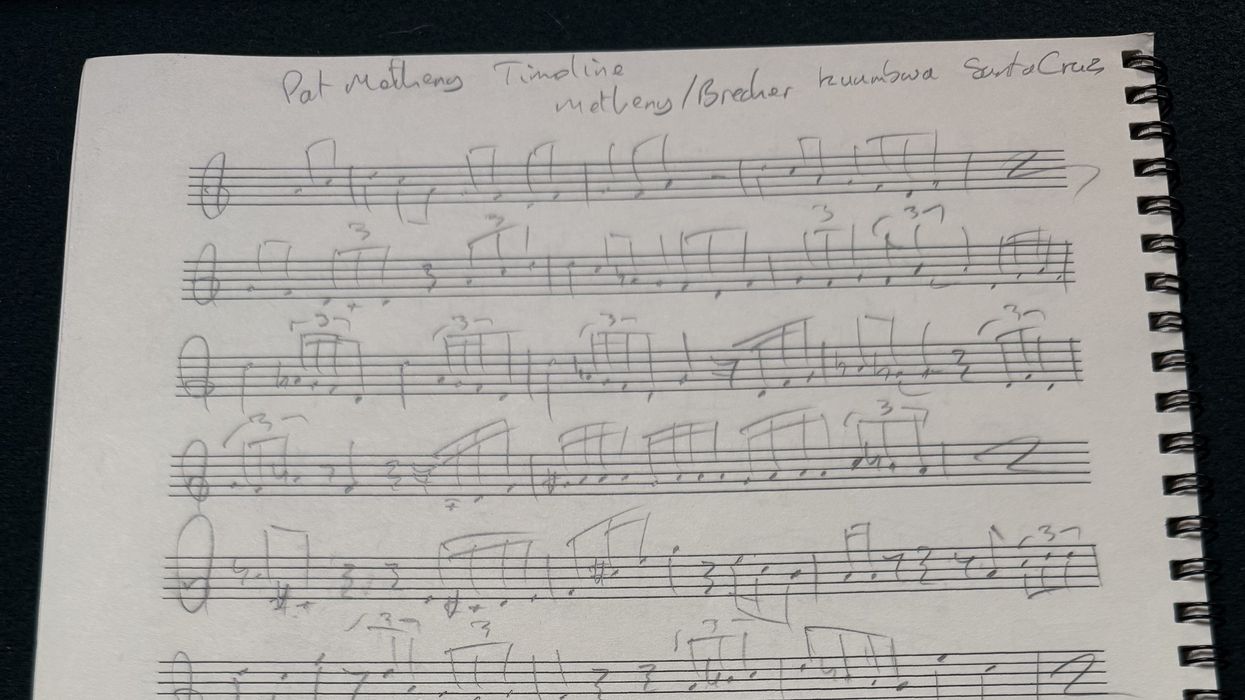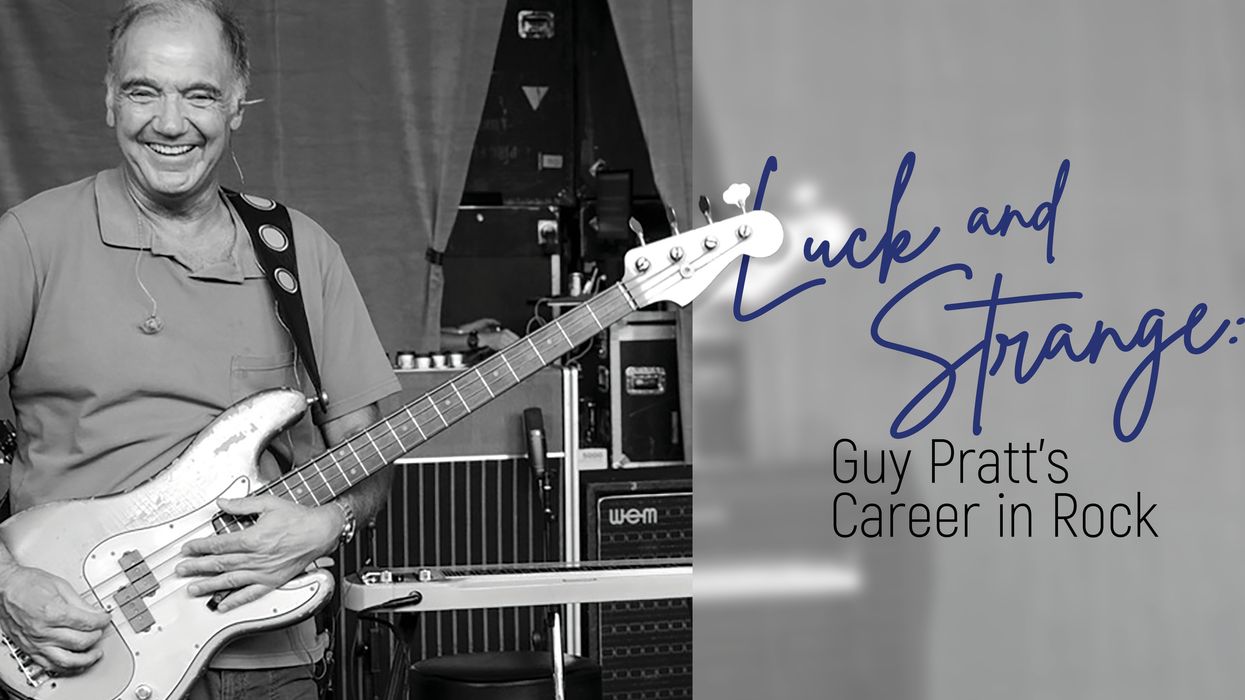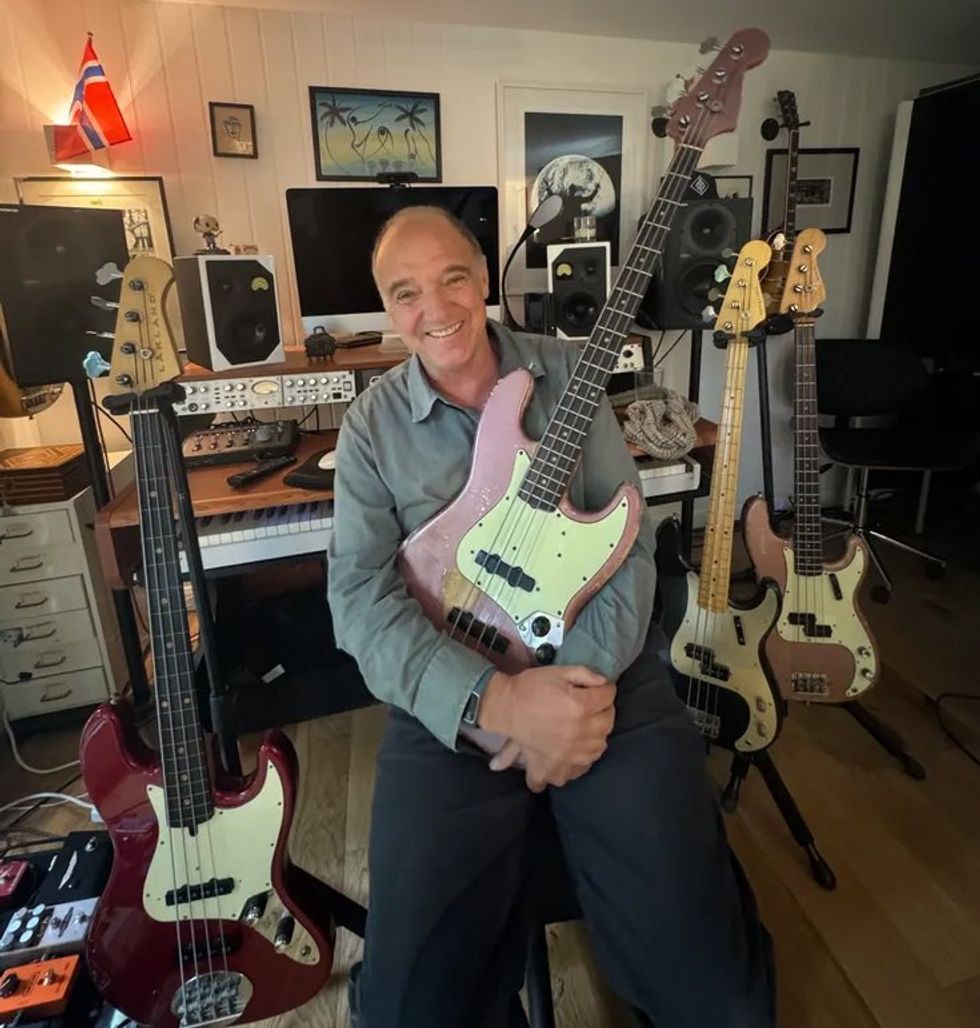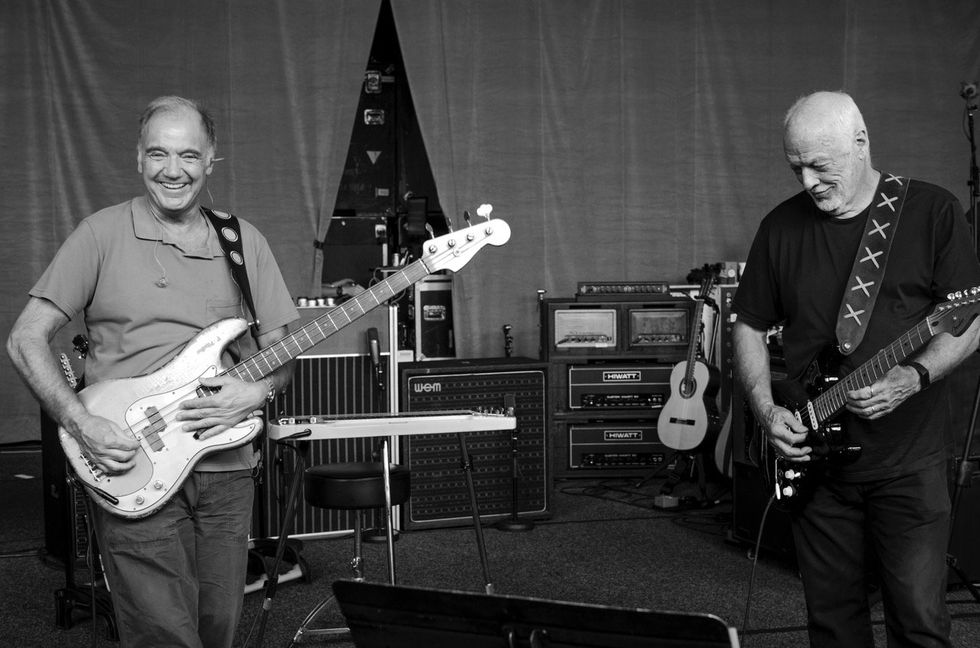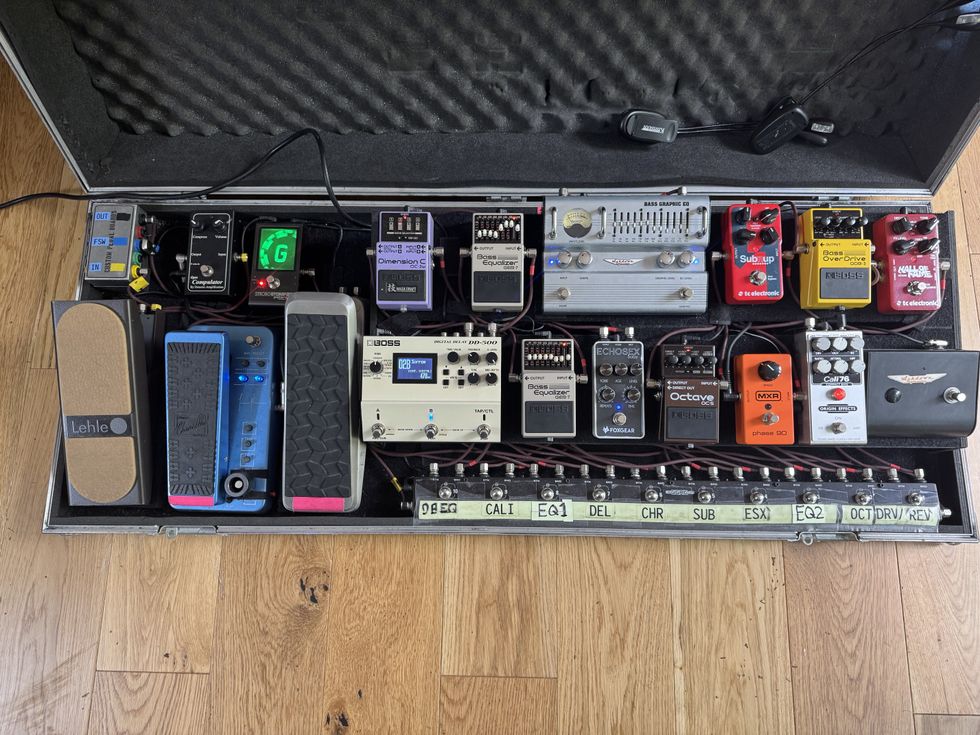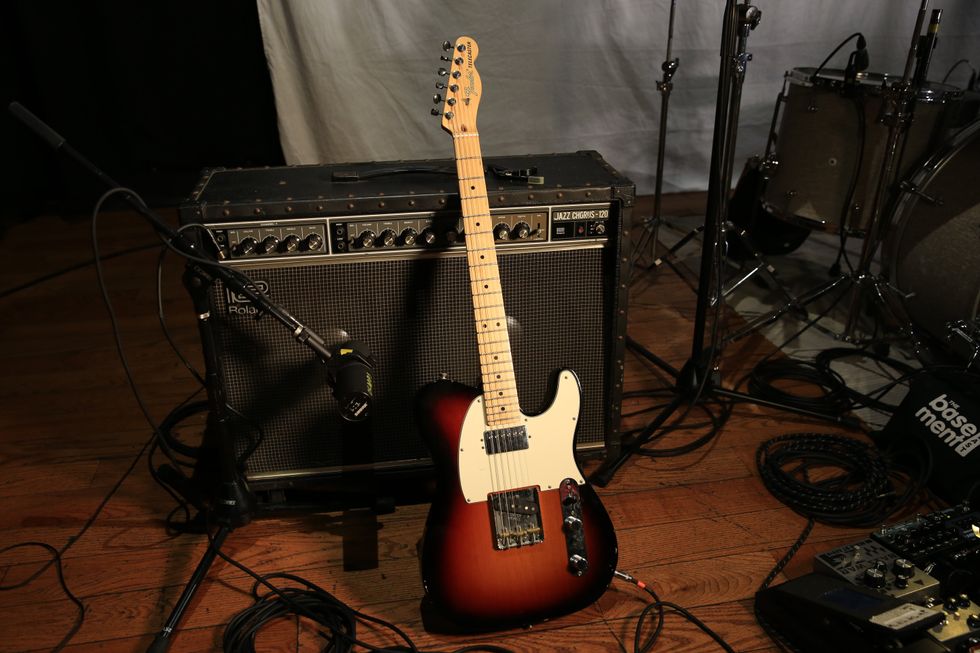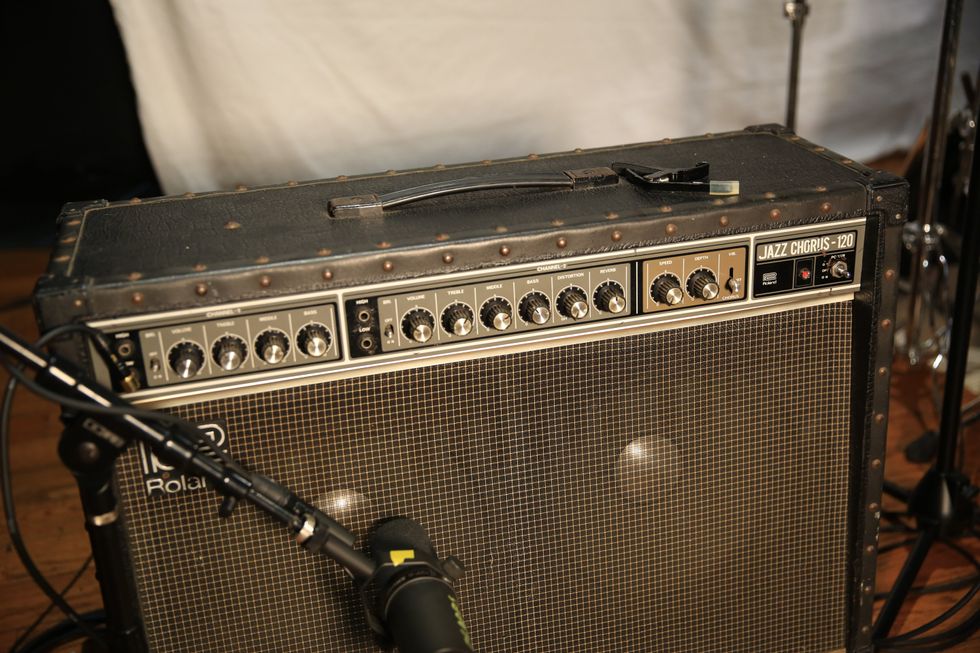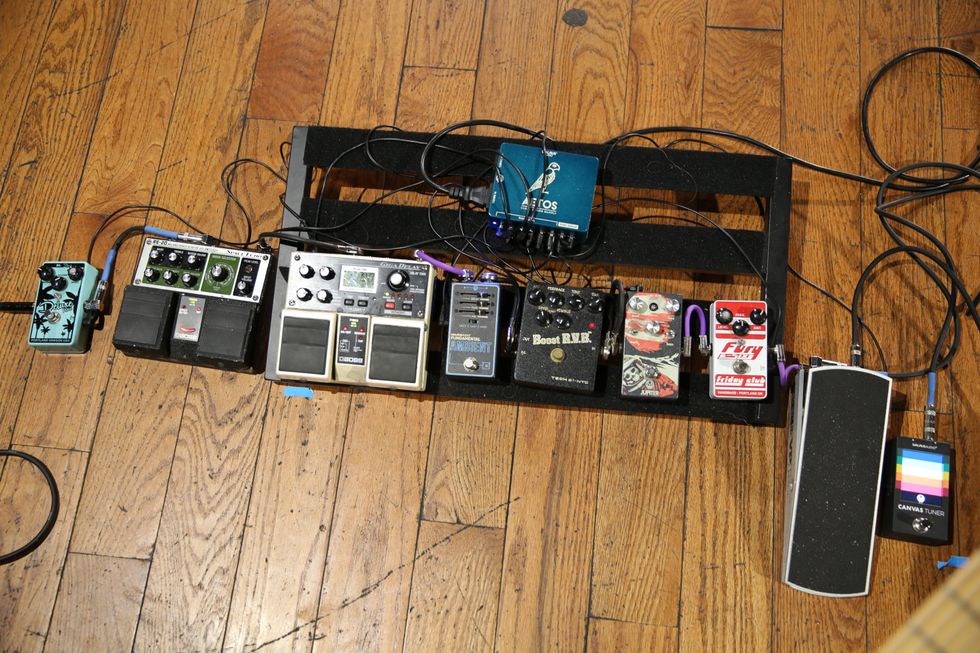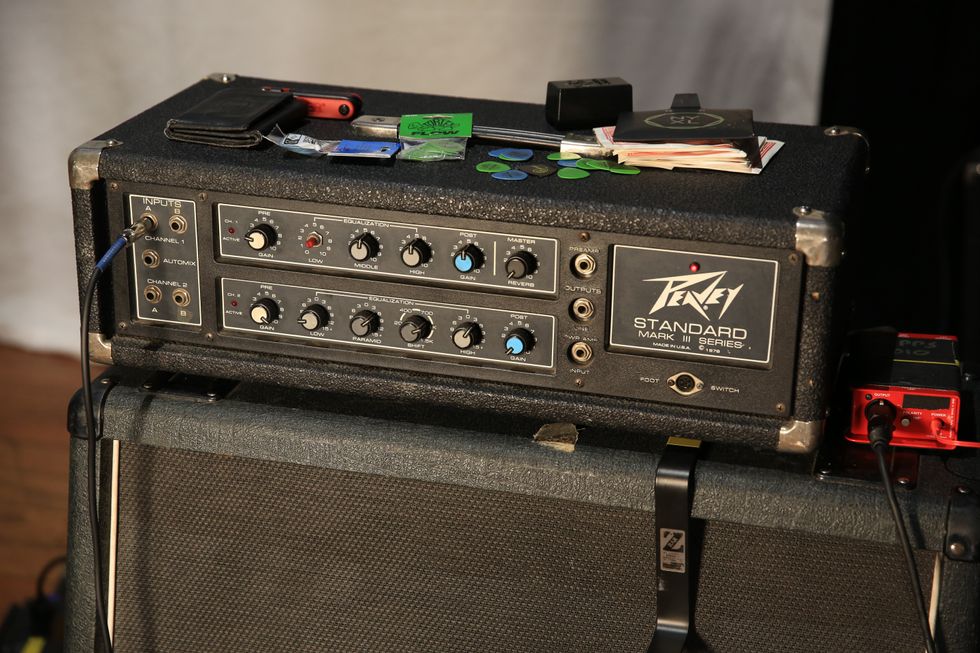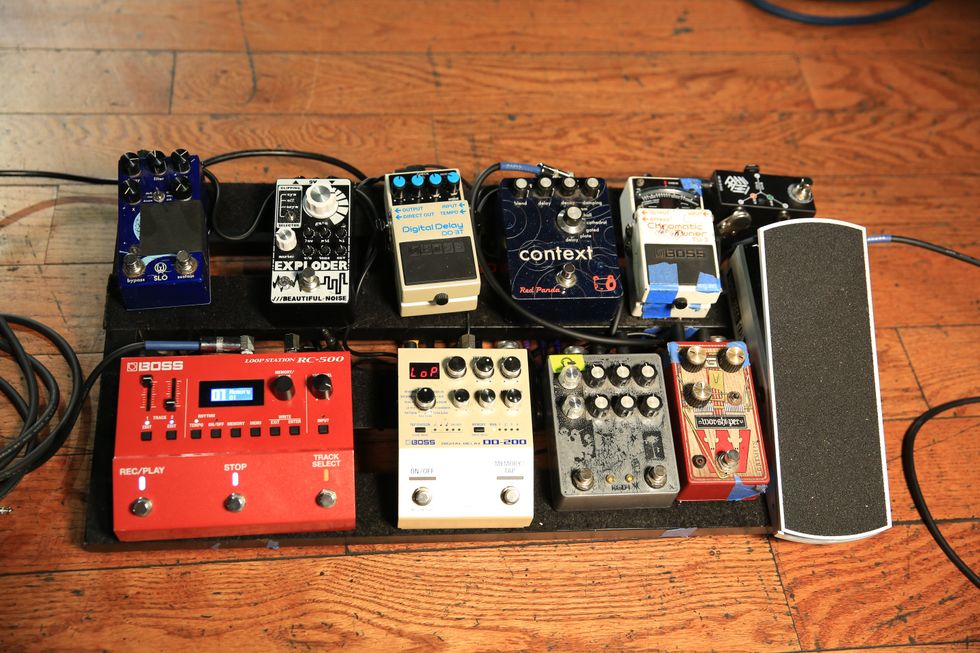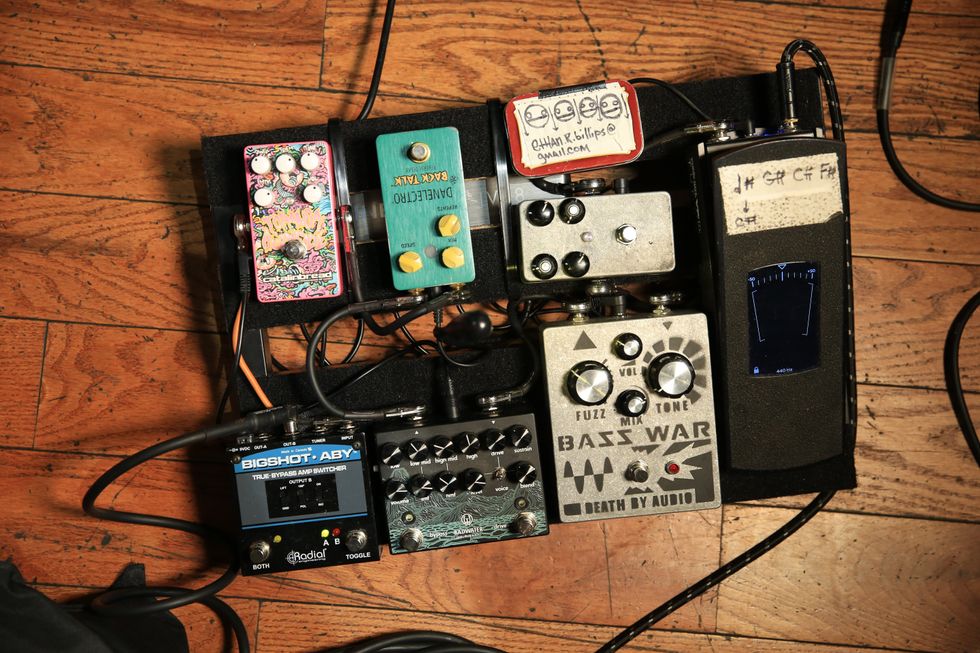Andrews Spectraverb (January)
When it comes to endless tone possibilities, it’s hard to top Fender’s blackface designs. And as Senior Editor Joe Gore discovered the Andrews Spectraverb is one of the most interesting refinements of the blackface template out there. At 40 watts, the Spectraverb occupies a sweet spot where headroom and natural drive and compression meet. Joe Gore put it more colorfully when he called the Spectraverb “spectacularly dynamic,” and noted that “It’s easy to find a sweet spot where you can pilot the gain by touch, or go from china shop to lava pit via guitar volume knob adjustments.”
$1,895 street, andrewsamps.com
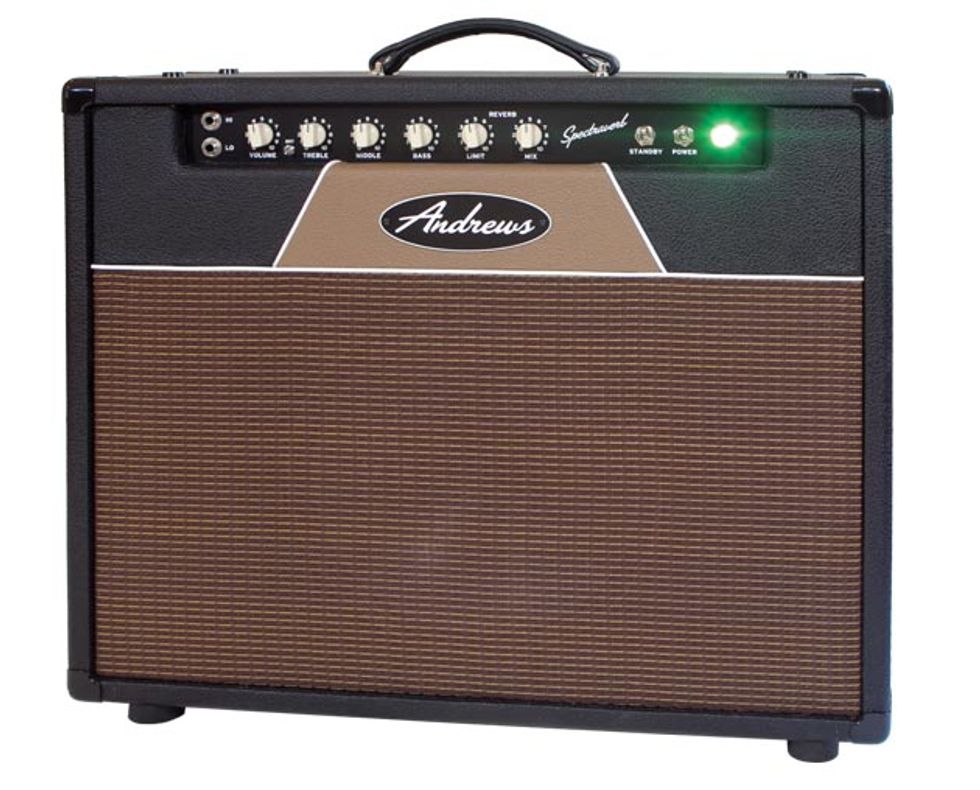
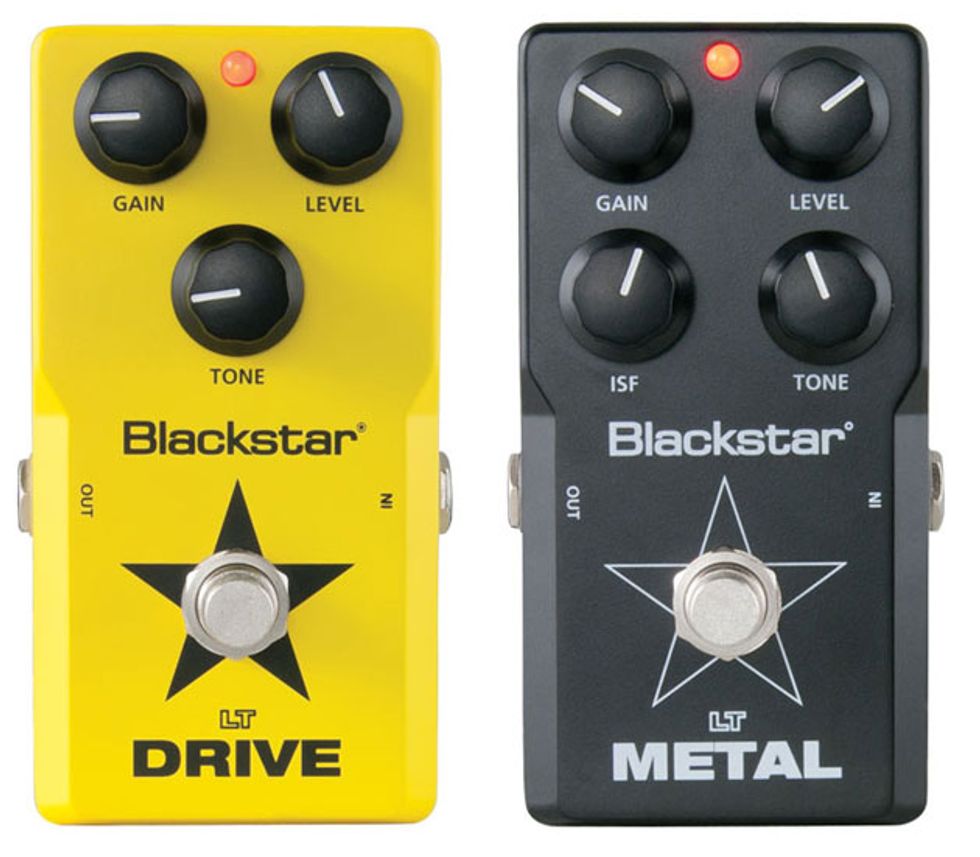
Blackstar LT Drive and LT Metal (January)
Blackstar’s LT pedals were built to be accessibly priced. But it’s their combination of value and sonic potency that made the LT Drive and LT Metal pedals award winners. Reviewer Joe Charupakorn said of the LT Drive, “there’s not much it can’t do short of extreme metal. It’s a great all-purpose dirt pedal that can rise to many occasions.” And of the LT Metal he said, “it can cover everything on the gain spectrum from classic rock to fusion to ’80s metal to djent.”
LT Drive $79 street, LT Metal $99 street, blackstaramps.com
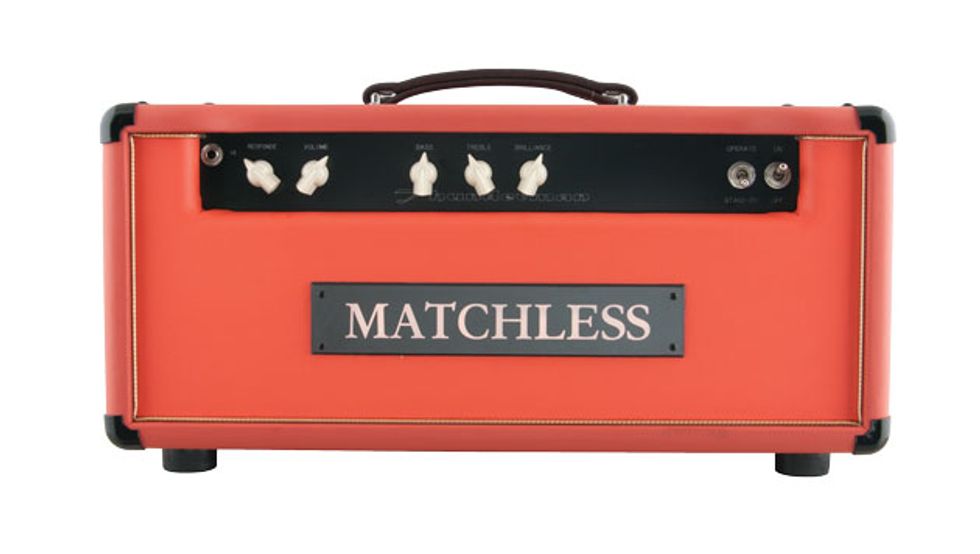
Matchless Thunderman (January)
Few manufacturers did more to usher in the boutique amp than Matchless. They quickly became the stuff of legend, but they also managed a bass amp masterpiece—the Thunderman. This award-winning re-imagining of the original Thunderman is no less formidable. At 45 watts, the EL34-powered head isn’t the most powerful bass amp in the world, but it’s round, responsive, loud, proud, and adaptable.
$2,200 street, matchlessamplifiers.com
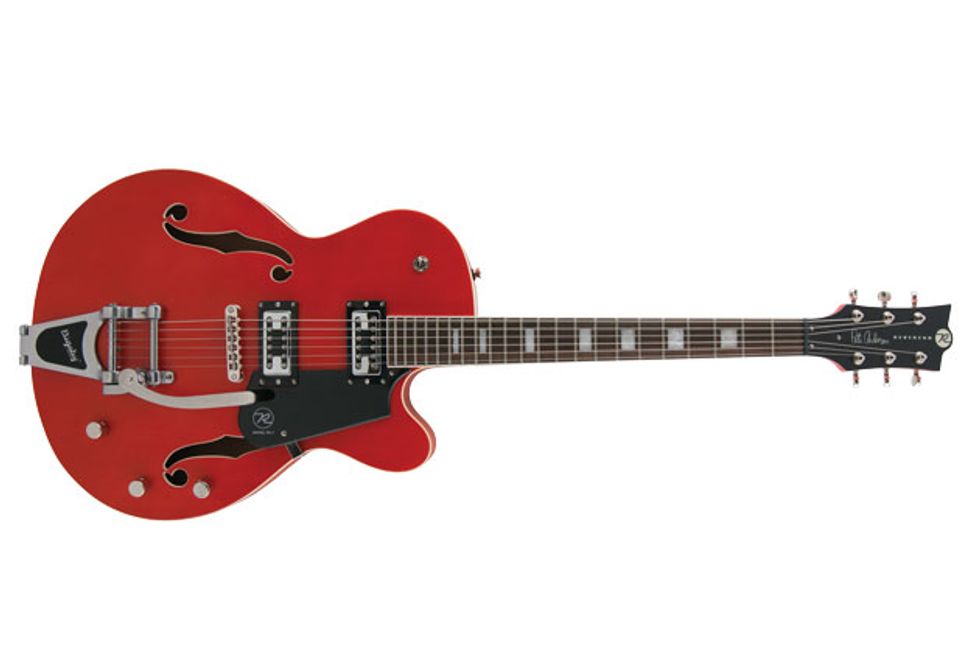
Reverend Pete Anderson PA-1 RT (January)
You’d expect a guitar with Pete Anderson’s name on it to be as versatile as ol’ Pete himself. And on that count, this archtop semi-hollow did not disappoint. The bracing enables use of a Tune-o-matic bridge, which enhances tuning stability and sustain. And the two pickups and bass contour knob make it equally adept at toasty, smoky jazz tones and blistering rockabilly lines. And speaking of lines, this Reverend has some of the handsomest curves among this year’s award winners.
$1,499 street, reverendguitars.com

Skreddy Little Miss Sunshine (January)
They aren’t everyone’s basket of biscuits, but few things recast a riff quite like a rich, musical phaser. Skreddy’s Little Miss Sunshine is about as rich and musical a specimen as you’ll find—at least if you gravitate toward Phase 90-like shades of swirl. What separates the Skreddy from lesser phasers is a beautiful clarity, pick responsiveness, soft contours, and amazing depth. It may not change the minds of phaser haters, but it’s a heaping feast of creamy swirl for players who savor the effect.
$229 street, skreddypedals.com
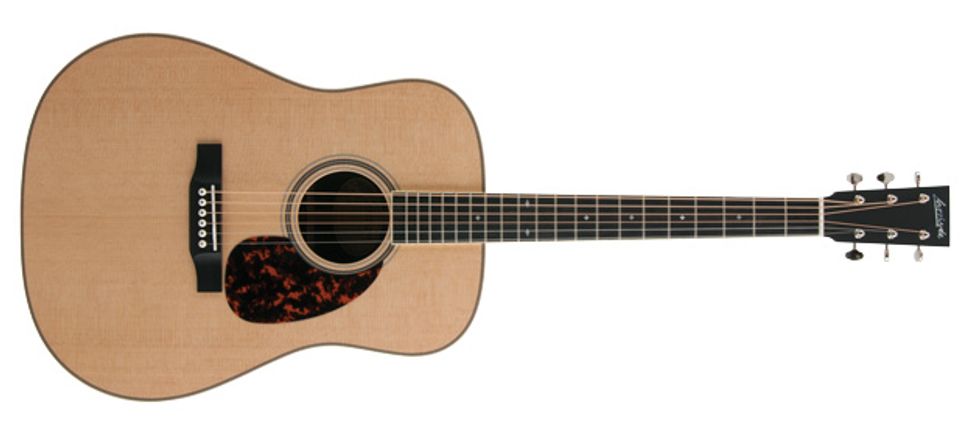
Larrivée D-40R (February)
Luthier Jean Larrivée has always been willing to twist tradition to unique ends, as evidenced by the new D-40R. From twenty paces, it looks like any one of a gazillion square-shoulder dreads. But Larrivée’s Scalloped Parabolic Hybrid bracing helps make it an especially sensitive and harmonically complex dread that excels at both fingerstyle and flatpicking—which makes this beautiful guitar a standout in the crowded $1,000–$1,500 dreadnought marketplace.
$1,425 street, larrivee.com

Lindy Fralin P-92 Set and P-90 in a Humbucker Cover Set (February)
No longtime PG reader will be surprised to see Lindy Fralin among this year’s award winners. Fralins have been among the Cadillacs of aftermarket pickups since the ’90s. In the form of these humbucker-sized neck and bridge pickups, though, Joe Gore heard an extraordinarily dynamic and harmonically rich P-90 tone that excelled even by Fralin standards. The Fralin P-92 also earned a Premier Gear award, largely for a rich, larger-than-life tone with super-strong fundamentals that gave Gore the sensation he was playing a long-scale Les Paul.
P-90 in a Humbucker Cover $130 street (each), P-92 $140 street (each), fralinpickups.com
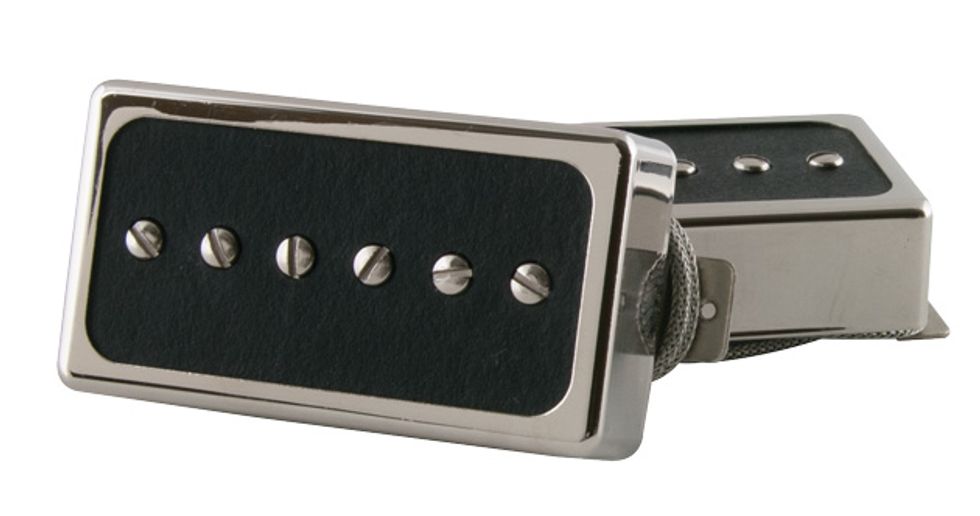
Lollar Single-Coil for Humbucker Set (February)
Even when it comes to pickups, pretty counts for a lot—and Lollar’s subtly lovely humbucker-sized P-90 left us mighty impressed with Jason Lollar’s design sense. But it was the sounds—sophisticated, warm, complex, smooth, and smoky—that found Joe Gore mesmerized and ready to dish a Premier Gear award in our humbucker-sized P-90 roundup.
$135 street, lollarguitars.com
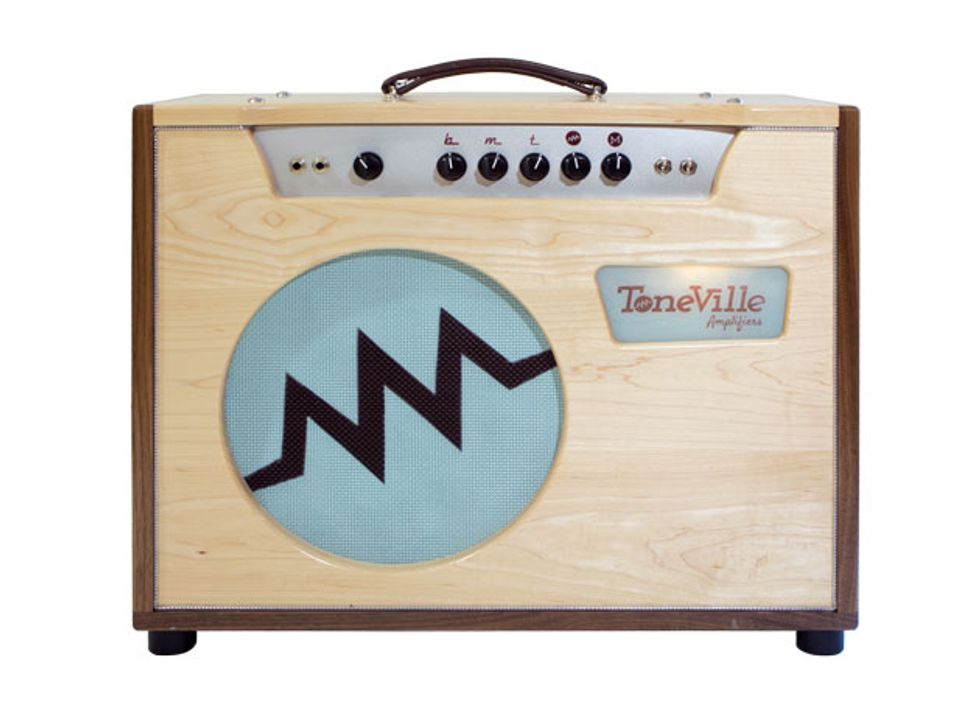
ToneVille Beale St. (February)
With a look that mates Danish furniture craft and retro-future whimsy, ToneVille’s 15-watt, 6V6-powered Beale St. 1x12 isn’t hung up on paying homage to the classics. Though the circuit and sound are in some measure indebted to Fender classics, the Beale St. excels, in its own special way, at being a great blank slate. Reviewer Joe Gore remarked, “no matter where I set the knobs, something inspiring leapt from the speaker.”
$2,495 street, tonevilleamps.com
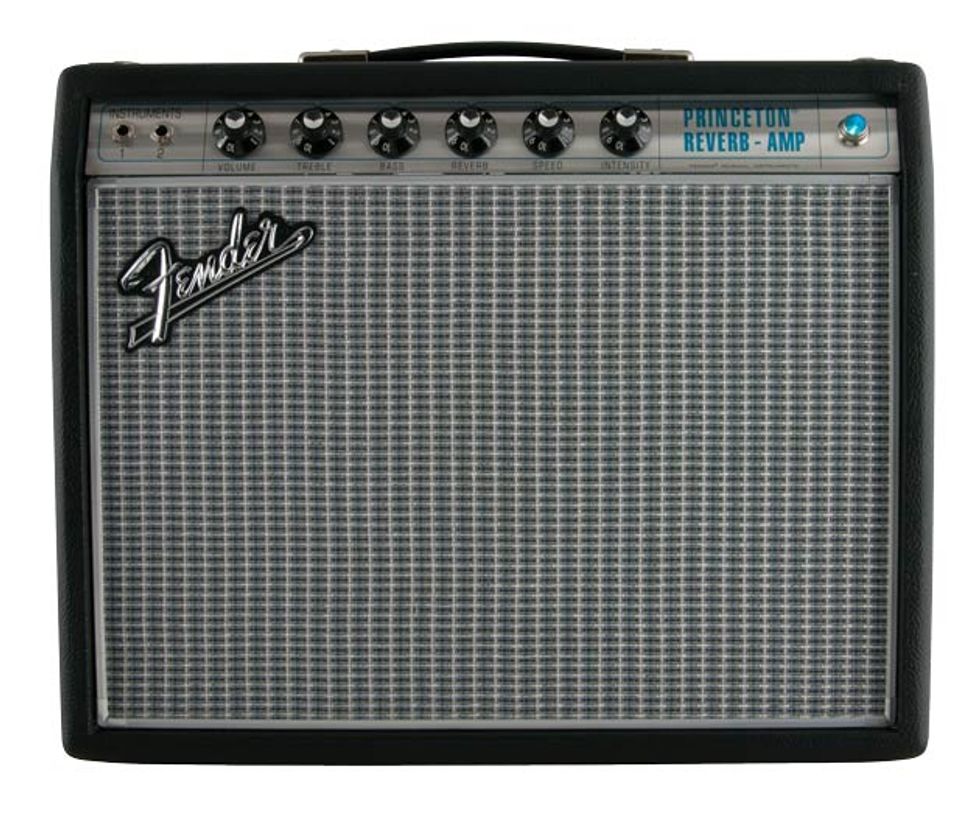
Fender ’68 Custom Princeton (March)
As a best friend to studio hounds and club and arena giggers alike, the Fender Princeton is one of the most easy-to-use, adaptable, and sweet-sounding amps ever. That’s why we were so pleased that this newest take on the underappreciated silverface version was such a winner. Reviewer Teja Gerken found the dynamics superb and the reverb excellent. And at just under $850, it’s not much to pay for so much vintage vibe, either.
$849 street, fender.com
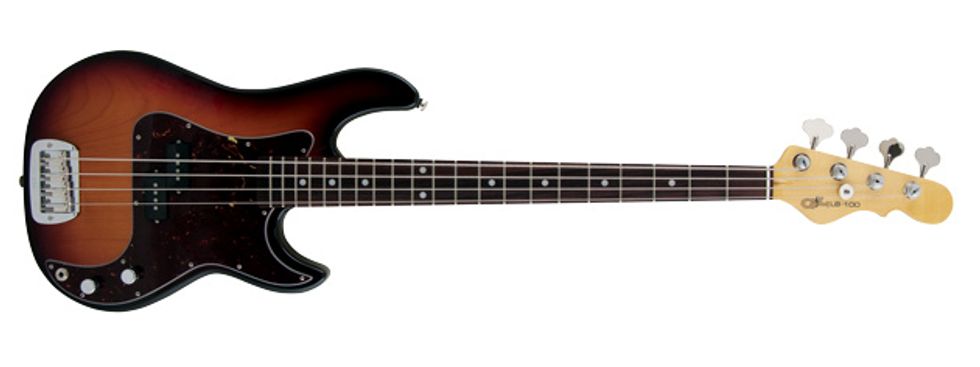
G&L LB-100 (March)
This reissue of a relatively unheralded G&L classic left reviewer Steve Cook impressed with its solid construction and a varied personality that he estimated would suit almost any gig. Cook particularly enjoyed the wide EQ possibilities and comfortable playability, likening the instrument’s vibe to whisky from a master distiller. Intoxicating!
$1,313 street, glguitars.com
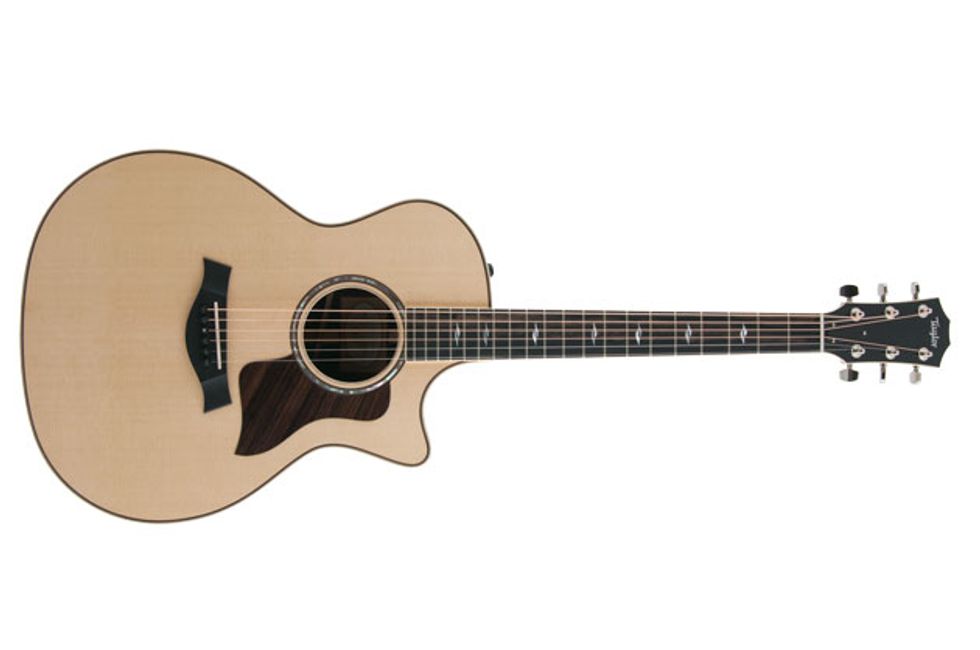
Taylor 814ce (March)
Though Bob Taylor and his company have been around long enough to properly be regarded as an acoustic guitar institution, the man loves to tinker. In the case of the 814ce, we’re talking tinkering with a twist: This revisiting of a signature Taylor Grand Auditorium design with bracing redesigned by master designer Andy Powers floored us with its balance and projection. Reviewer Scott Nygaard was impressed enough with its versatility to remark, “you’ll rarely wish you had another guitar instead.”
$3,199 street, taylorguitars.com
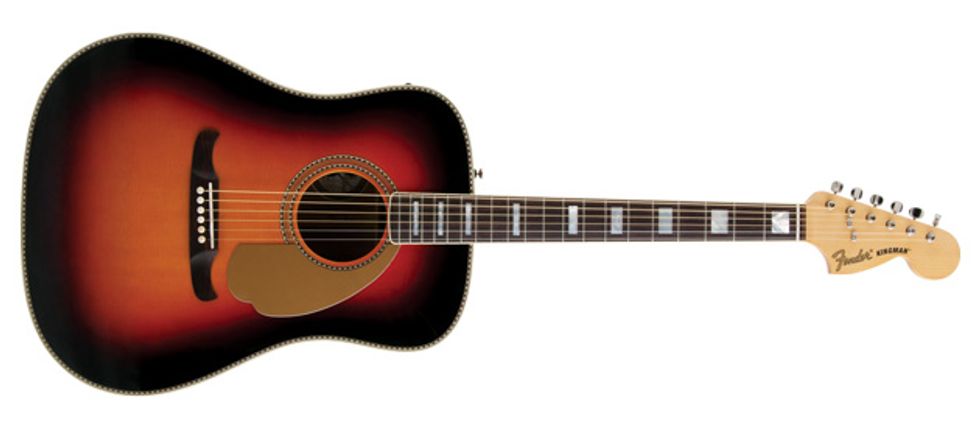
Fender Kingman Pro (April)
It’s interesting that Fender’s decision to reinvent its acoustic presence involved revisiting a past that some considered a blight on the company’s history. But in reinventing the Kingman, which debuted somewhat controversially in the mid ’60s, they retained the beauty and visual impact of the legendary Roger Rossmeisel’s designs while adapting top-flight lutherie techniques. The result is an idiosyncratic dreadnought that’s resonant, complex, and downright gorgeous.
$2,600 street, fender.com
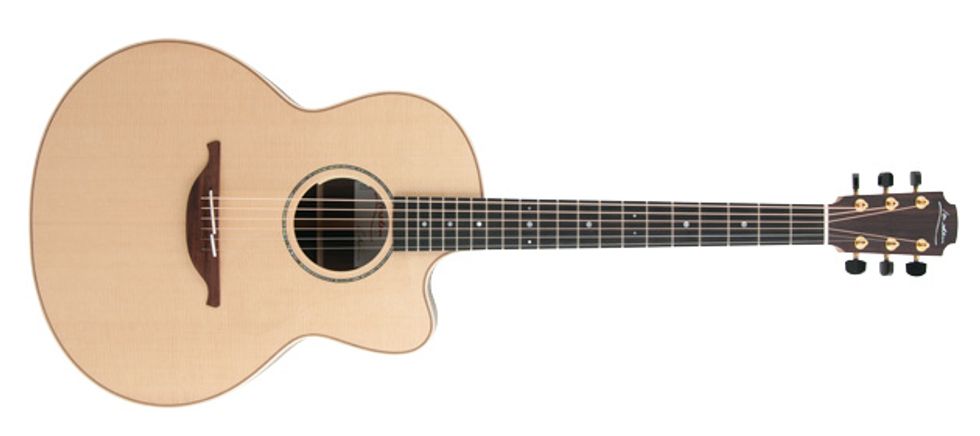
Lowden 32 SE (April)
It would be hard to find an acoustic connoisseur who’s been anything but knocked out by a Lowden. George Lowden’s subdued and immaculately crafted designs tend to lend a focus to the sound, which in the case of the 32 SE is a delightfully varied palette. The rosewood-and-spruce construction and near-OM dimensions make the guitar fantastically dynamic and surprisingly loud. And with its uncannily well-suited L.R. Baggs Anthem system, this Lowden is a positively exquisite stage acoustic.
$5,295 street, georgelowden.com
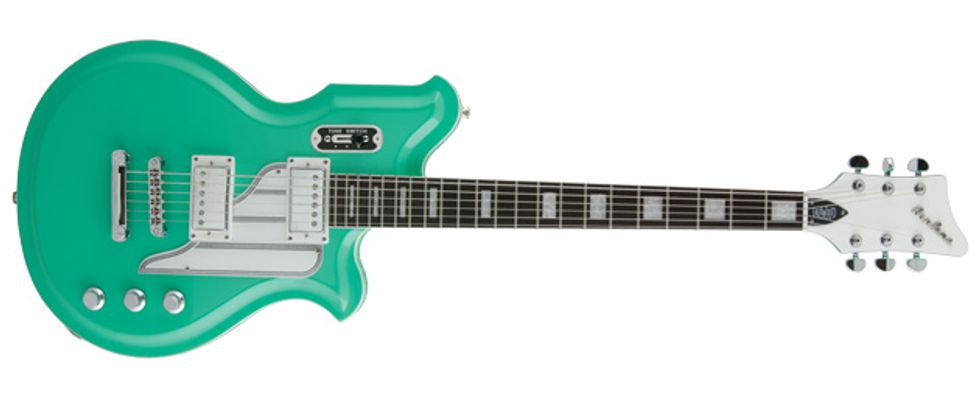
Eastwood Airline Map Baritone (April)
One thing we can’t quite figure out here at PG is why so few players (and manufacturers) have caught on to the fascinating sonic possibilities of baritone guitars. So we were ecstatic when Eastwood came along with the Airline Baritone Map. When reviewer Teja Gerken wasn’t just getting a kick out of gawking at this gloriously odd bird, he marveled at the broad spectrum of tones he could extract from the chambered body and humbuckers. He was also struck by the “pro vibe” of the instrument—an especially remarkable quality given the accessible price.
$779 street, eastwoodguitars.com
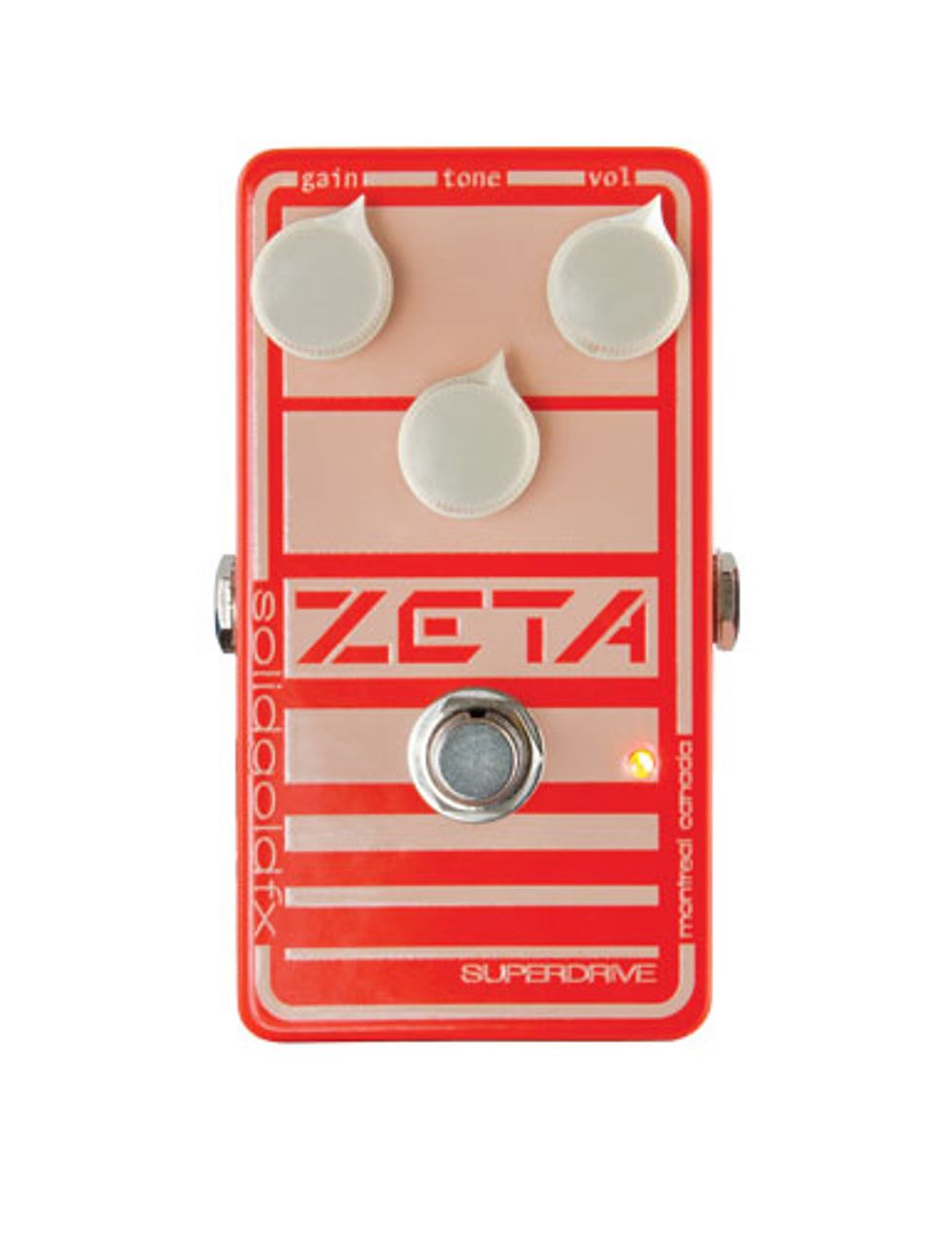
SolidGoldFX Zeta Drive (April)
A lot of players like their overdrive to be civilized and reckless in equal measure. SolidGoldFX’s Zeta Drive walks that line as deftly as any OD we can recall. Reviewer Matt Holliman discovered that the “Zeta adds heat without loss of definition or detail,” and is “great for creating tones that cut through, even at high-gain settings.” Holliman also found that the Zeta integrates seamlessly with fuzz and other effects and added a cool responsiveness to his setup.
$165 street, solidgoldfx.com
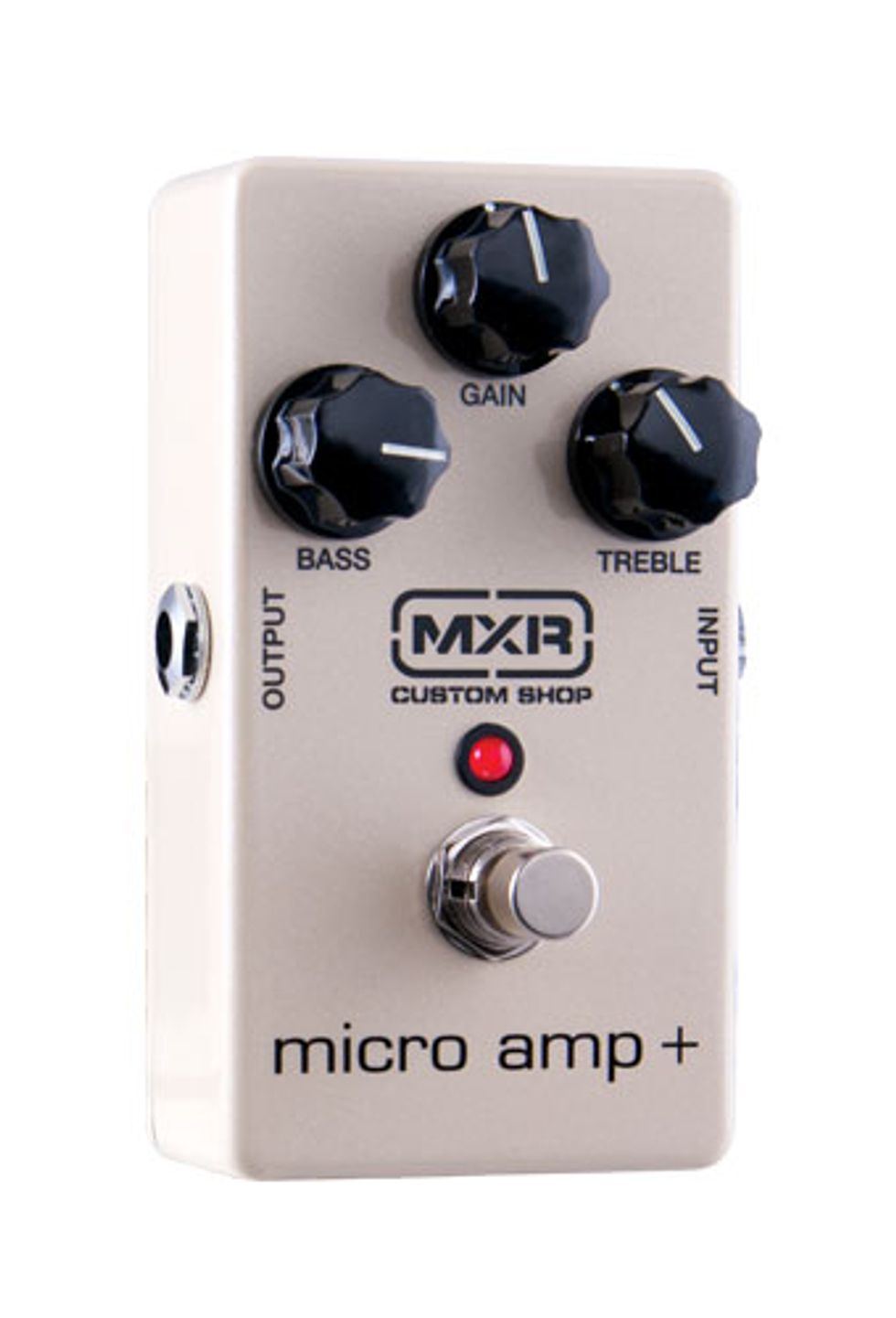
MXR Micro Amp+ (April)
Few effects are as unassuming as an original MXR Micro Amp, but it’s the simplicity of the circuit that makes it a staple for thousands of players. The small enhancements (essentially a bass and treble control) on the Micro Amp+ make this new version extraordinarily flexible. Whether adding zing and kick to a compressed Fender amp, adding body and taming treble on a Marshall, or thickening a vintage fuzz, the Micro Amp+ delivers big without much hassle.
$120 street, jimdunlop.com
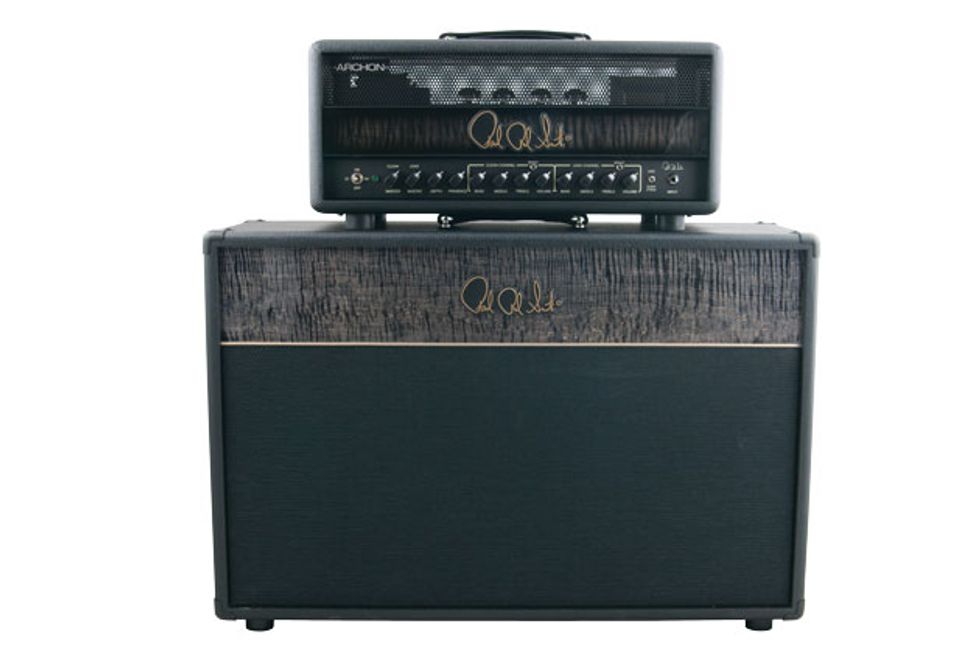
Paul Reed Smith Archon (May)
It’s rare that an amp can level a small city with gain yet also deliver clear clean tones and touch-sensitive nuance. But that’s what PRS achieved with the Archon, an amp so varied and cooperative that reviewer Jordan Wagner couldn’t decide if playing Jerry Reed licks or Metallica thrash was more fun. Loud, bursting with low end, and fantastically responsive, Archon is a magic bullet for high-gain players who like it clean sometimes, too.
$1,899 street (head), prsguitars.com
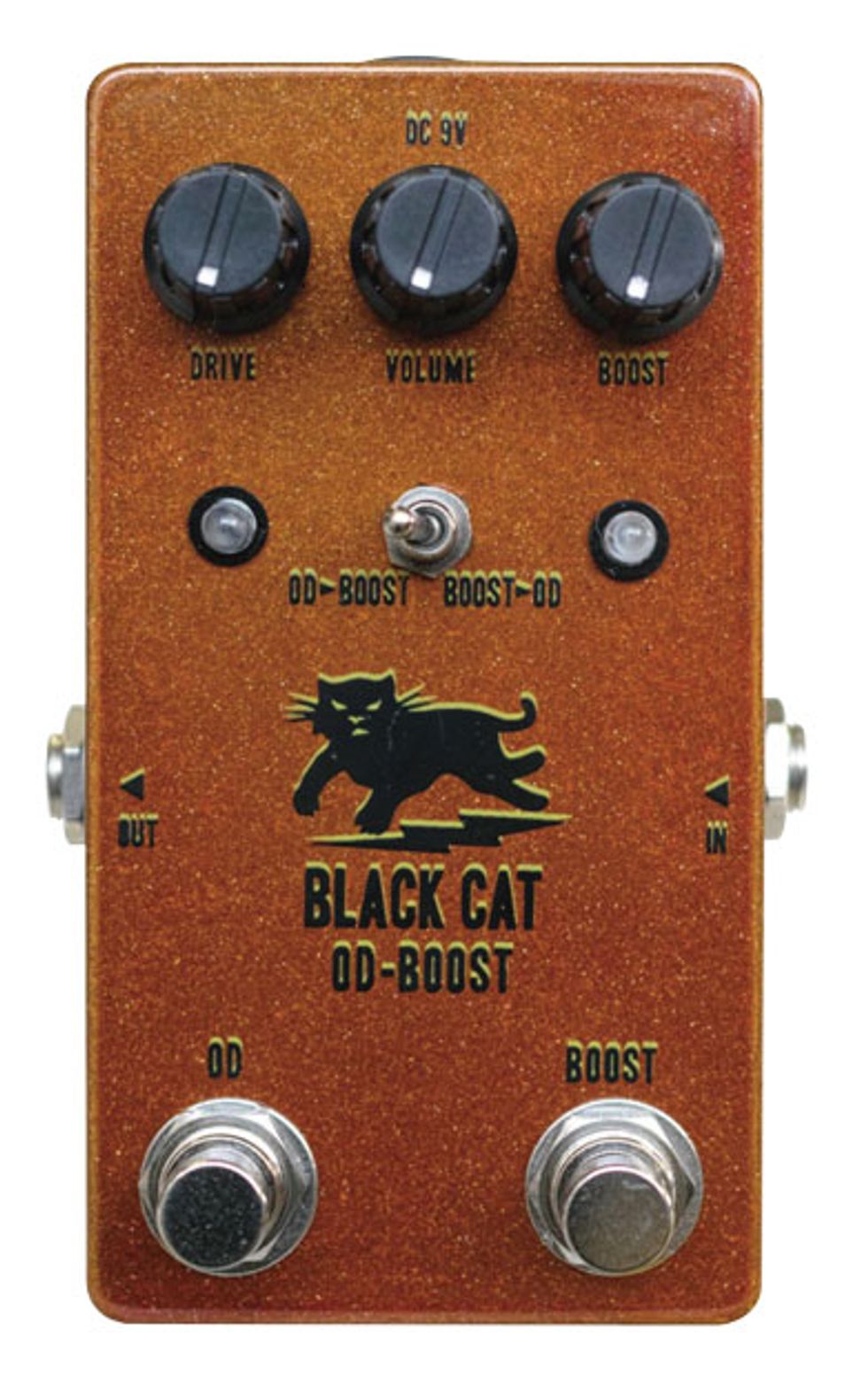
Black Cat OD-Boost (May)
Though the old-school prescription for various shades of gain is creative use of the volume control on your guitar, there are also in-between colors that boosts and overdrives can coax out of your amp. Black Cat’s OD-Boost is a beautifully conceived, well-executed two-switch overdrive and boost with two very distinct voices that can expand your tone vocabulary exponentially. The boost has miles of headroom. The OD tends toward dirty and aggressive. Together, they give you almost endless shades of oomph.
$195 street, blackcatpedals.com

Electro-Harmonix Soul Food (June)
Whether it’s a radical sound that inspires you when your muse has flown the coop, or a timeless sound you just can’t do without, EHX has a way of saving the day. In this case, they’ve delivered a damn-close-to-perfect approximation of the feel and sound of the impossibly out-of-reach Klon Centaur—all in a pedal that won’t ding your wallet much worse than a set of sneakers.
$66 street, ehx.com
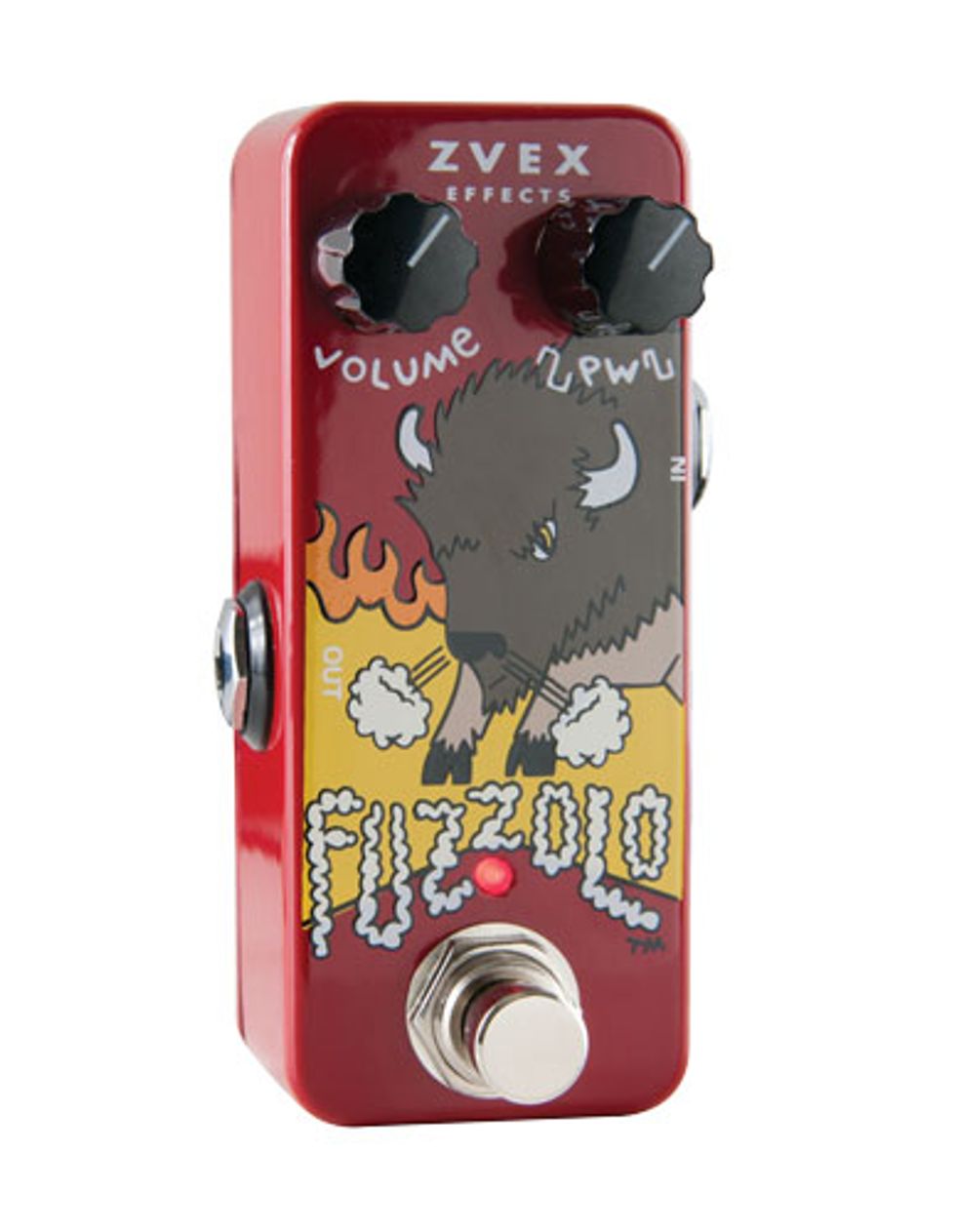
ZVEX Fuzzolo (July)
We have to tip our hats to ZVEX for managing to stuff so much, well, ZVEX-ness into this little guy. There may be just two controls, but one is a dedicated pulse-width knob that enables you to transform the Fuzzolo from a rich, muscular, desert-rock dream fuzz to a spitting, lo-fi monster. And at just 129 bucks, it’s an easy-on-the-pocketbook way to introduce some ZVEX mayhem to your board.
$129 street, zvex.com
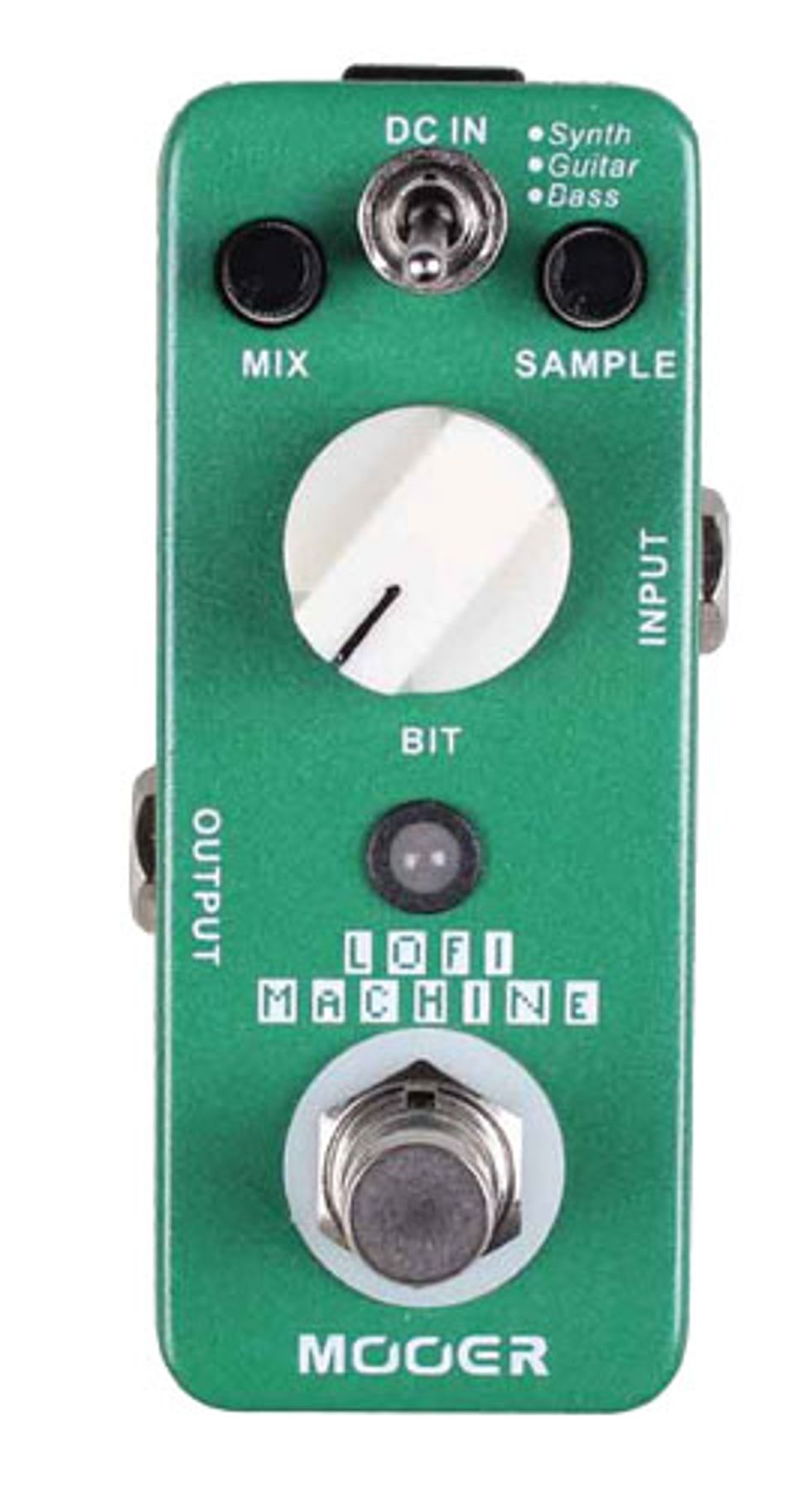
Mooer LoFi Machine (July)
Whether you’re trying to cover for the keyboard player you never could recruit or looking to enhance your guitar tone palette with more demented and synthy textures, the LoFi Machine delivers a whole lot—especially for its size. Reviewer Shawn Hammond got a kick out of everything from simulating electric pianos to generating quasi-Nintendo video-game textures, and the wee size and price means it won’t break the bank or crowd your pedalboard.
$98 street, mooeraudio.com
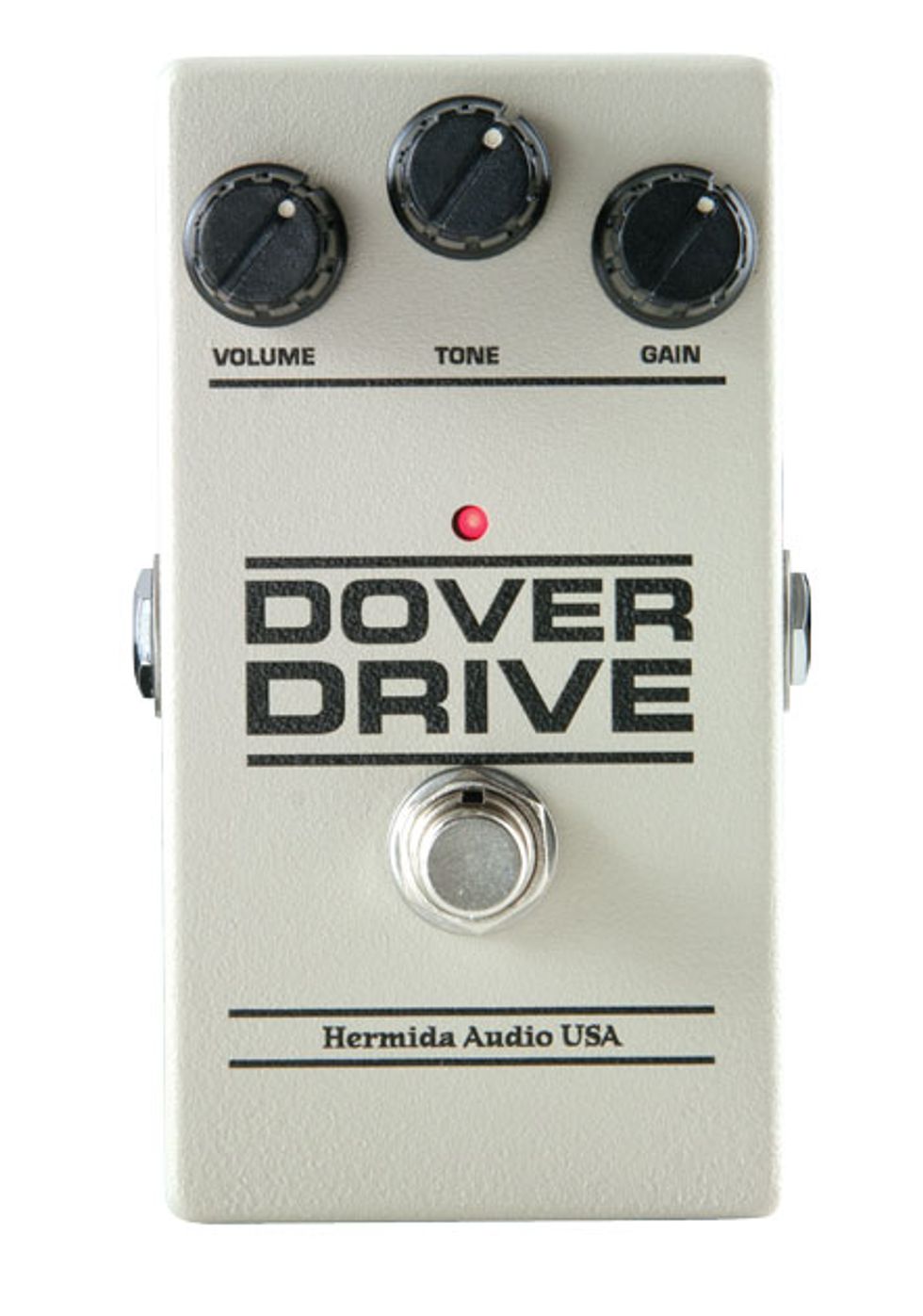
Hermida Audio Dover Drive (July)
The original Chandler Tube Driver shaped legendary tones from David Gilmour to Eric Johnson. Given that Hermida’s homage to that unit lacks an actual tube, the Dover Drive seemed to promise the impossible. But reviewer Joe Charupakorn found it to be superbly flexible—“a touch-responsive, dynamic, and wide-ranging overdrive suitable for any player who loves transitioning from ‘smooth’ to ‘growl.’”
$199 street, lovepedal.com
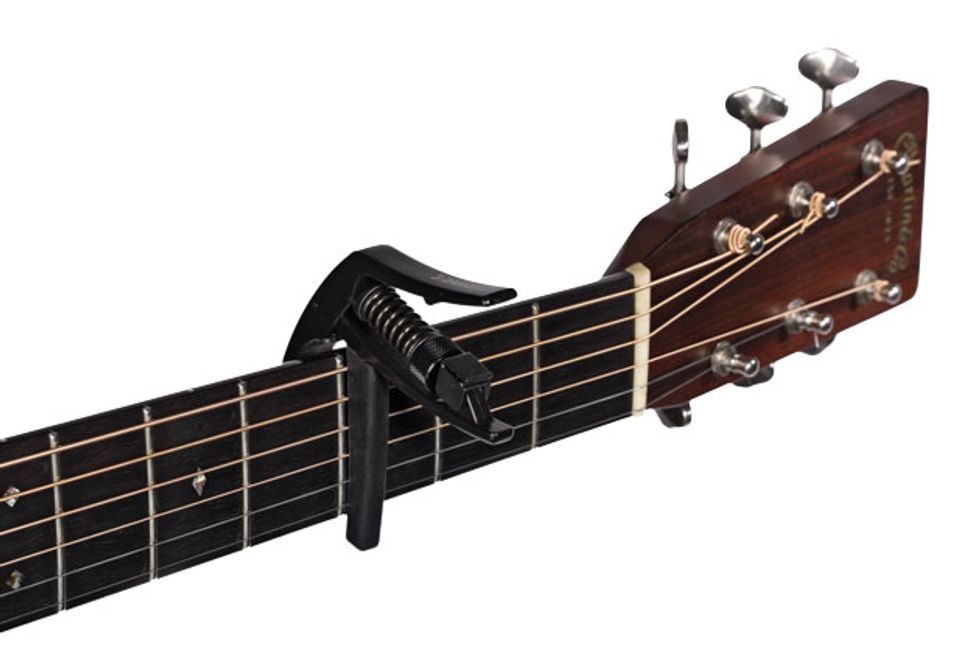
Planet Waves NS Artist Capo (July)
Plainly said, using the Planet Waves NS Artist Capo is a joy. It’s smooth, and it’s fast and easy to adjust. But as Rich Osweiler found, it’s the capo’s knack for even intonation and tension that makes it a real stage asset—and a Premier Gear winner.
$16 street, planetwaves.com
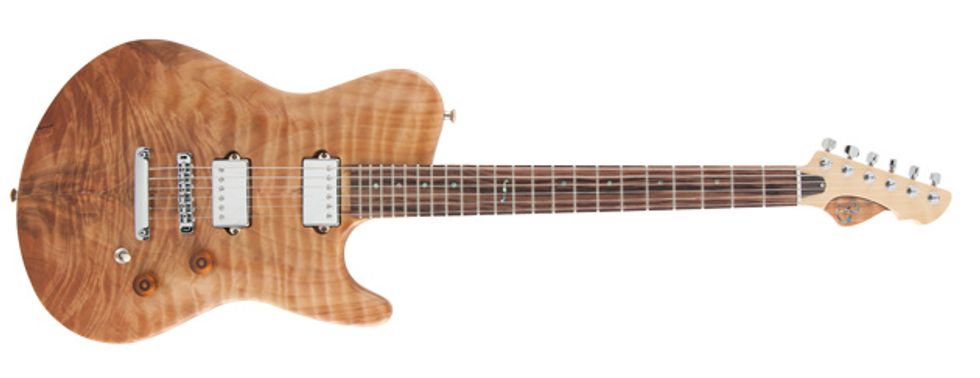
Born Guitars OG Carve (August)
We love Born’s commitment to building guitars using eco-friendly, sustainable materials. But the effort is doubly meaningful when guitars as good as the OG carve are the result. Our review guitar was crafted from reclaimed cedar and redwood, and—unsurprisingly—the guitar sounded like it had an old soul, singing in a voice Joe Charupakorn called “balanced, smooth, and contoured.”
$2,995 street, bornguitars.com
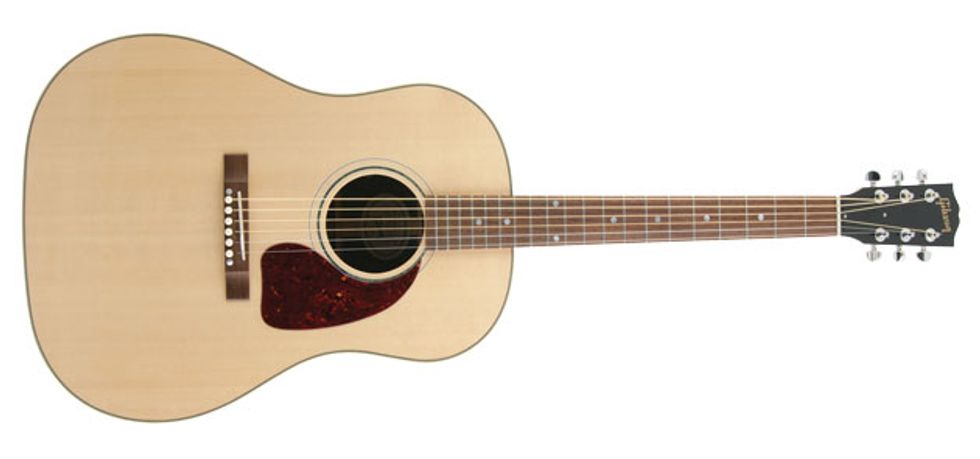
Gibson J-15 (August)
Gibson’s slope-shouldered dreadnought shape, which has been around since before the Second World War, is the foundation of a few legendary guitars. But the J-15 is certainly one of the most unique-sounding incarnations of this beautiful form. Alternately dry, husky, and airy, it’s super rich in overtones and a breeze to record in the studio—especially if you’ve ever struggled with recording strummed parts. And this version is priced to make it a relatively affordable way to get a slice of Gibson’s ineffable slope-shoulder magic.
$1,500 street, gibson.com
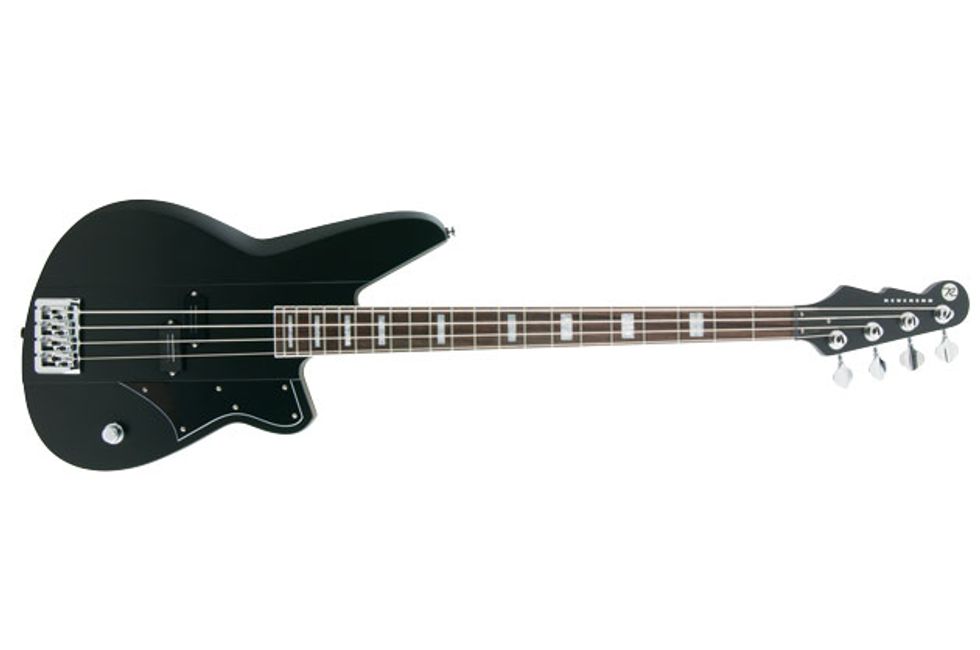
Reverend Meshell Ndegeocello Fellowship (August)
Meshell Ndegeocello’s abilities as a bassist know few bounds, so it’s no surprise that her signature Reverend Fellowship bass earned a Premier Gear award. Reviewer Jonathan Herrera called the response “balanced and subtle,” while praising the massive lows and airy top end. Articulate, powerful, and impressively built, the Fellowship is remarkably flexible for such a streamlined instrument.
$1,199 street, reverendguitars.com

Rivera Venus Deux (August)
The 25-watt, 6V6-driven Venus Deux will inevitably draw comparisons to the legendary Fender Deluxe. But as Shawn Hammond found out, it’s packed with secret weapons like the focus function and notch control that can transform the amp profoundly. Hammond also discovered that the Venus Deux has a way of sounding larger than life, observing that with “presence and focus cranked, the Venus can blaze so hard you’ll have other guitarists rubbing their eyes in disbelief.”
$1,499 street, rivera.com
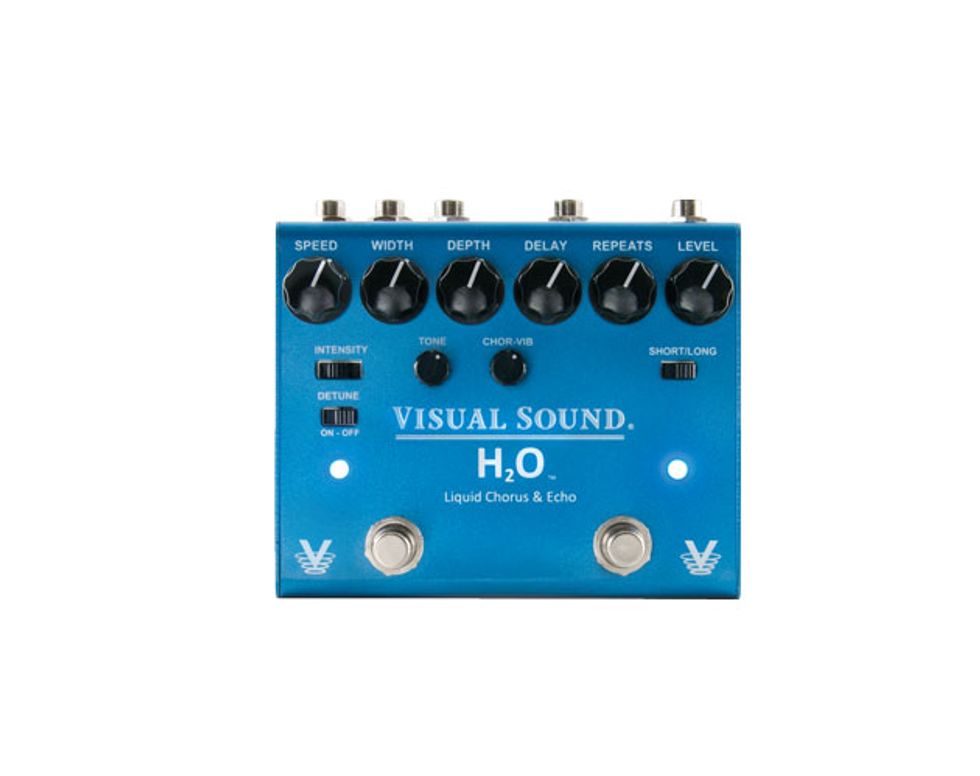
Visual Sound V3 H2O (September)
While it would have been easy enough for Visual Sound to stick a delay and a chorus in a single box and ratchet up the price in the name of some imagined utility, the V3 H2O emerged as an award winner, in part, for how beautifully it integrated the two effects. Joe Charupakorn found the digital delay section warm and clear, and the chorus capable of thick Leslie sounds and gentle shimmers alike. Given that he also found the sum of the two greater than the individual parts, it’s no surprise that V3 H20 got top marks for value, as well.
$179 street, visualsound.net
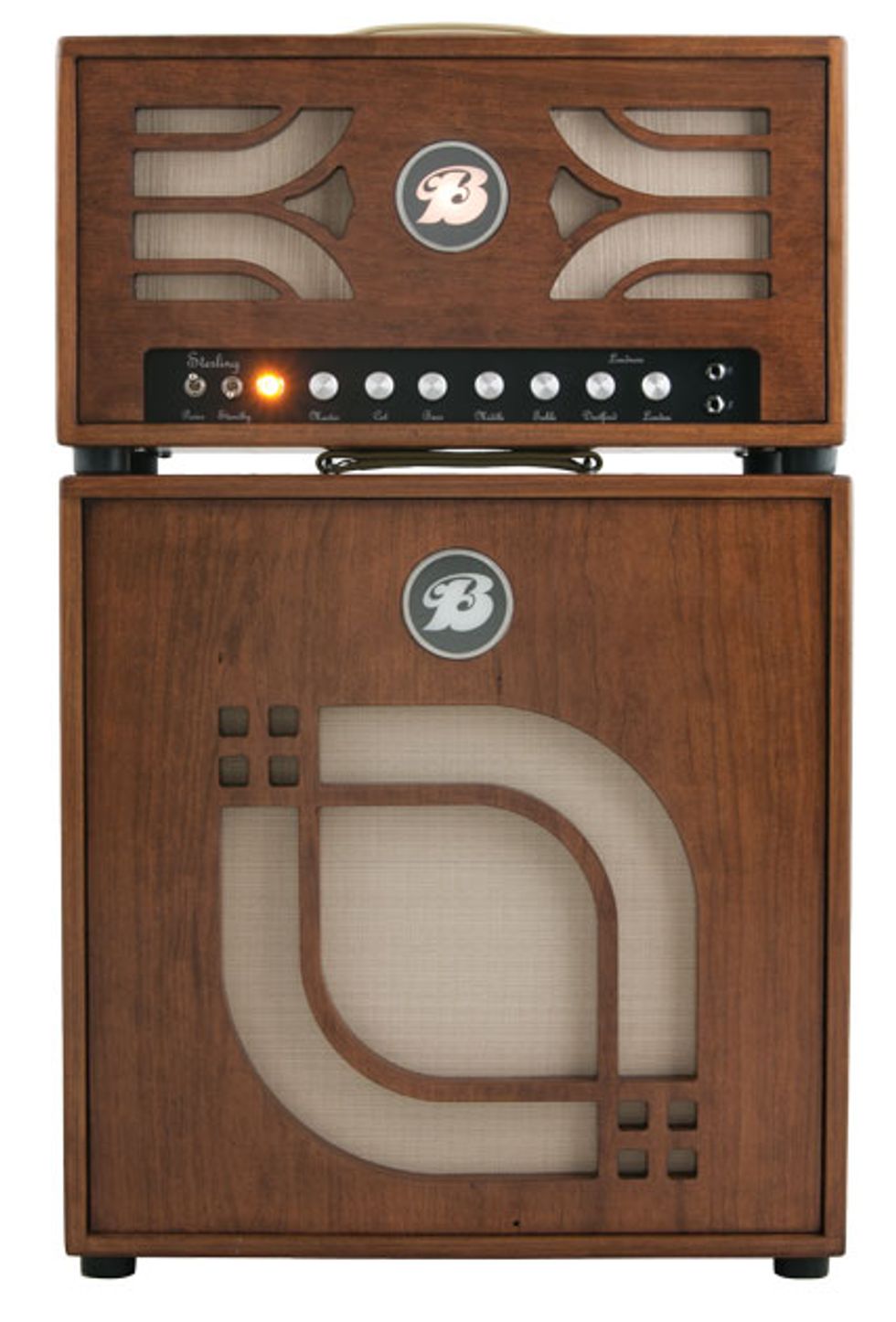
Bradford Sterling (September)
An amp that so seamlessly fuses the sounds of an AC30 and a Marshall plexi would be impressive if you made it out of burlap sacks and bubble gum wrappers, but stick that circuit in a head and cabinet with an heirloom-furniture vibe and you’re talking about magic. The 18-watt, EL84-powered Sterling is really two amps in one. But because you the can blend the Vox-like and Marshall-style channels, the Sterling becomes an amp of uncommon, even spectacular depth, complexity, and downright explosive potential.
$1,895 street (head), $600 street (1x12 cab with Weber Legacy or Silver Bell speaker), bradfordamps.net
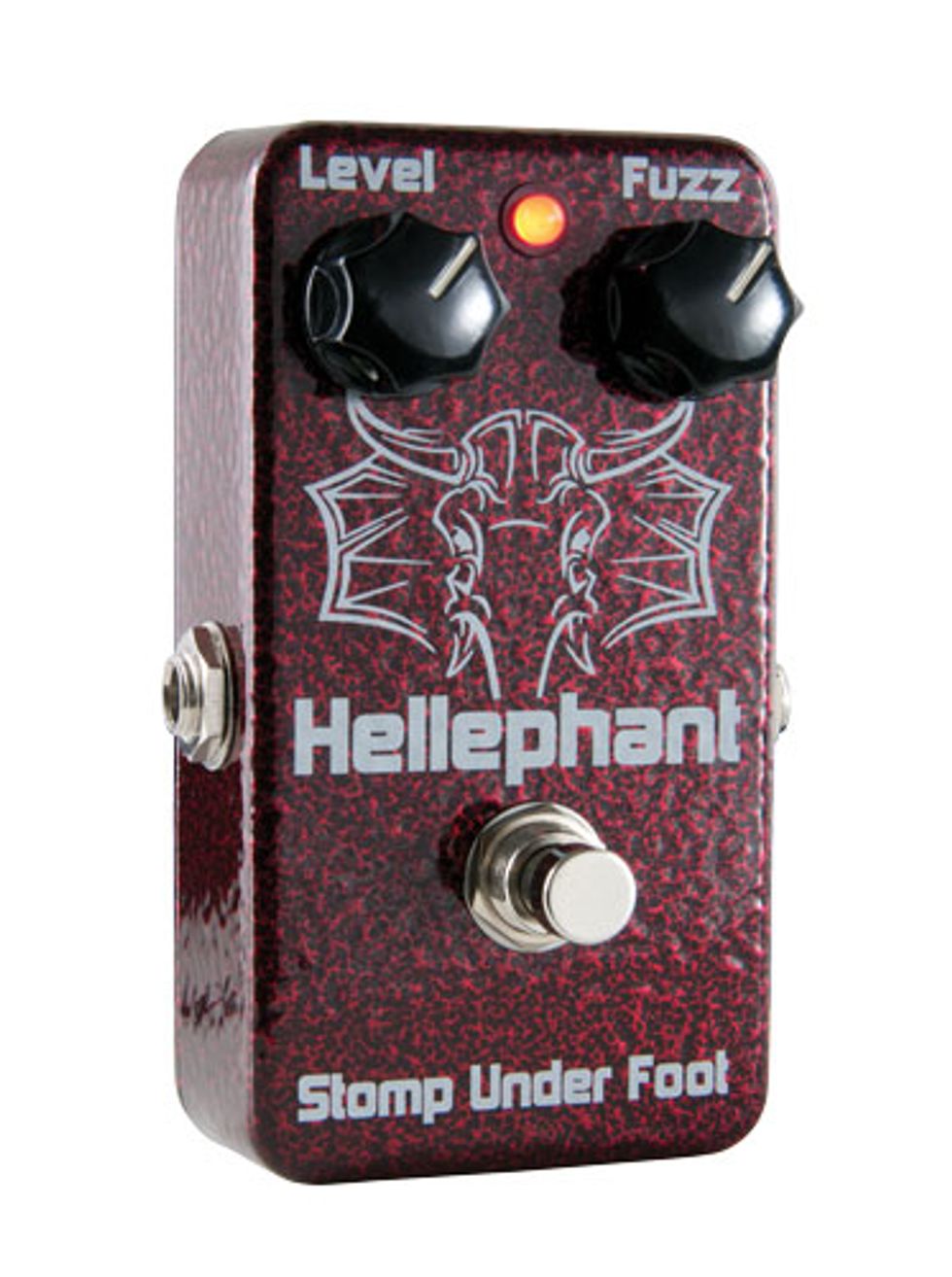
Stomp Under Foot Hellephant (September)
Messing with the classic silicon Fuzz Face circuit is tricky business. It’s flawed, less than user-friendly, and demands a certain patient curiosity—but it yields spectacular results when used right. We gave Stomp Under Foot’s Hellephant a Premier Gear award for all the ways that it tames some of the silicon Fuzz Face’s most unruly characteristics while retaining the classic’s touch and volume sensitivity—and for how it adds a cholesterol-rich dollop of extra gain. It may be a touch too contemporary for hardcore Fuzz Face purists, but more open-minded players will revel in its abundant fuzzy potential.
$155 street, stompunderfoot.com
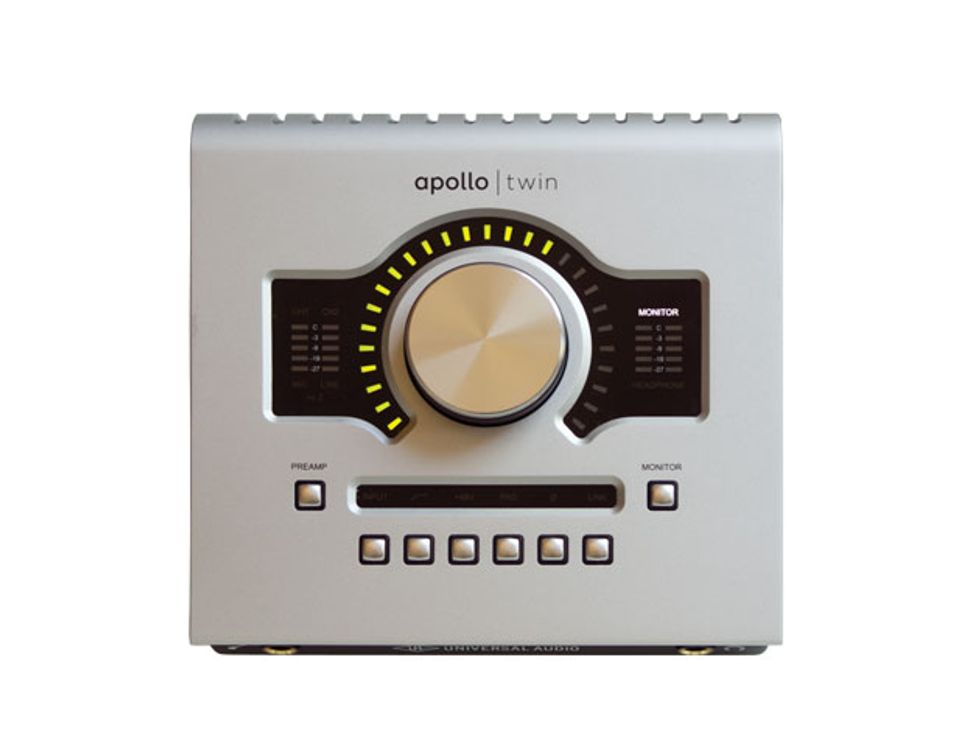
Universal Audio Apollo Twin (September)
The Apollo Twin audio interface looks too dang simple to do all that it does. But whether you’re powering a Mac-driven stage rig or recording on the go, it has a way of rendering listeners flabbergasted with its wildly authentic-sounding analog modeling. The included plug-ins (UA 1176 and LA-2A compressor and 610-B tube preamp modelers among them) make this a formidable little desktop-studio asset—especially with the Console virtual mixing board app. And this combination of power and portability make the Apollo Twin an easy Premier Gear winner.
$699 (single processor), $899 street (dual processor), uaudio.com
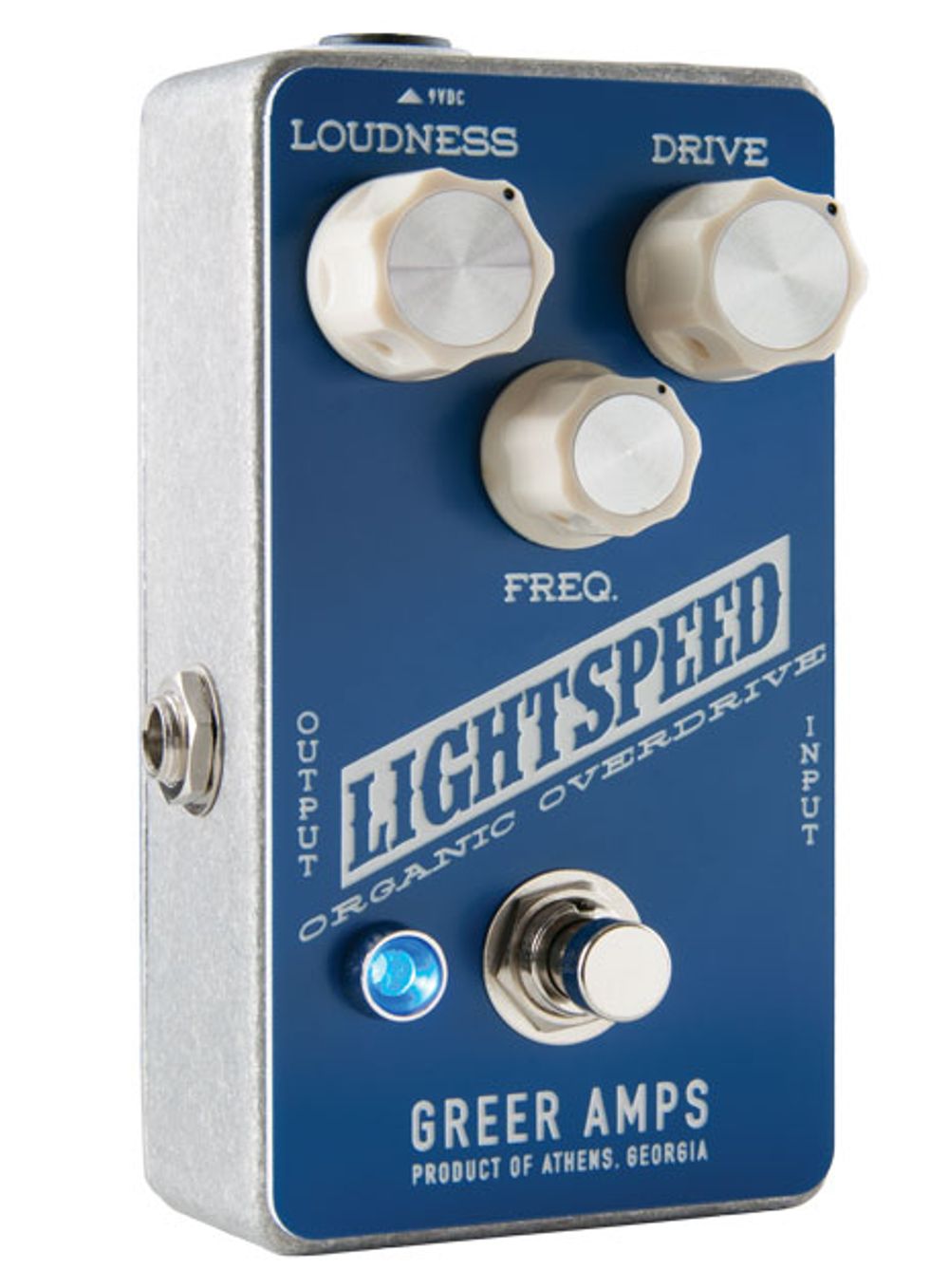
Greer Amps Lightspeed Organic Overdrive (October)
With the Lightspeed, Greer Amps has crafted a touch-sensitive stomp that covers everything from transparent boost to tough-and-gritty, cranked-amp tones with aplomb. With a super-sensitive and beautifully voiced freq control that adds a very natural presence, the Greer is a shining star in a crowded overdrive market.
$190 street, greeramps.com
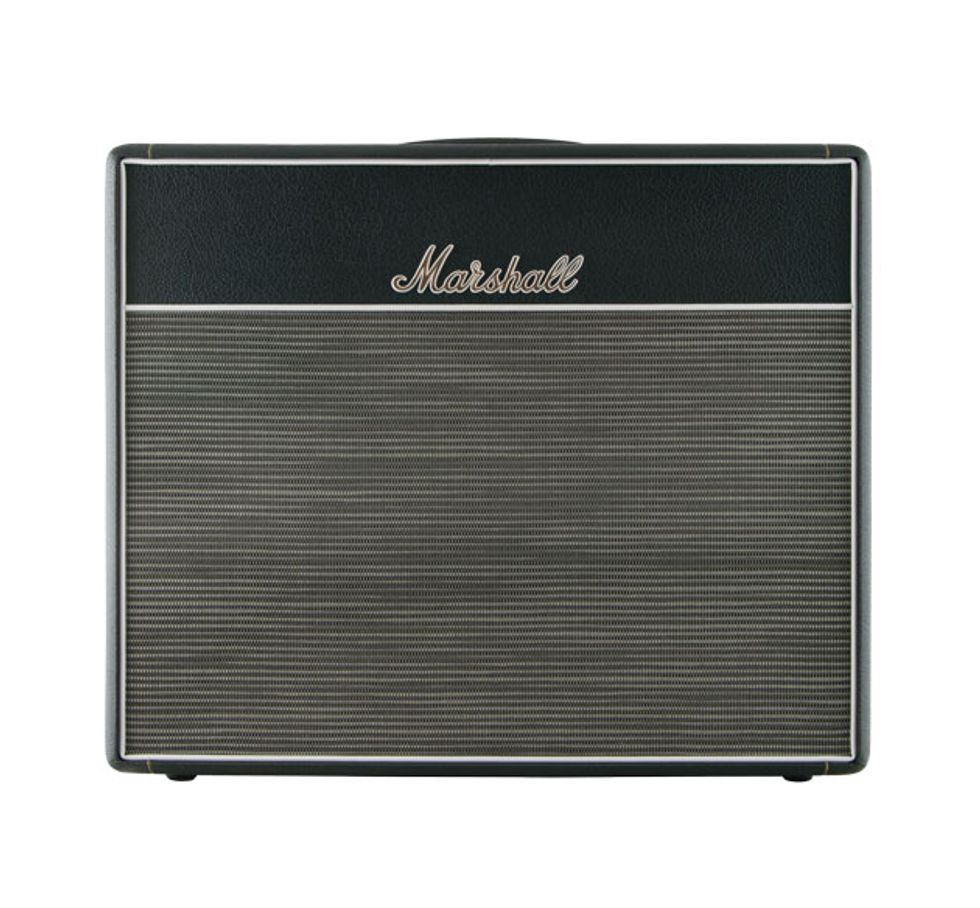
Marshall 1958X (October)
Senior Editor Joe Gore reviewed the 1958X fresh off a project building two Marshall 18-watt clones. So to say Gore’s assessment benefits from deeper insight is an understatement. He found the build impeccable. And though many players savor the grittiness of this model, Gore was also knocked out by the warm, pretty clean tones lurking within. Dynamic, alive, and uniquely adept at walking the line between clean and crunch, the 1958X was a runaway Premier Gear winner.
$2,699 street, marshallamps.com
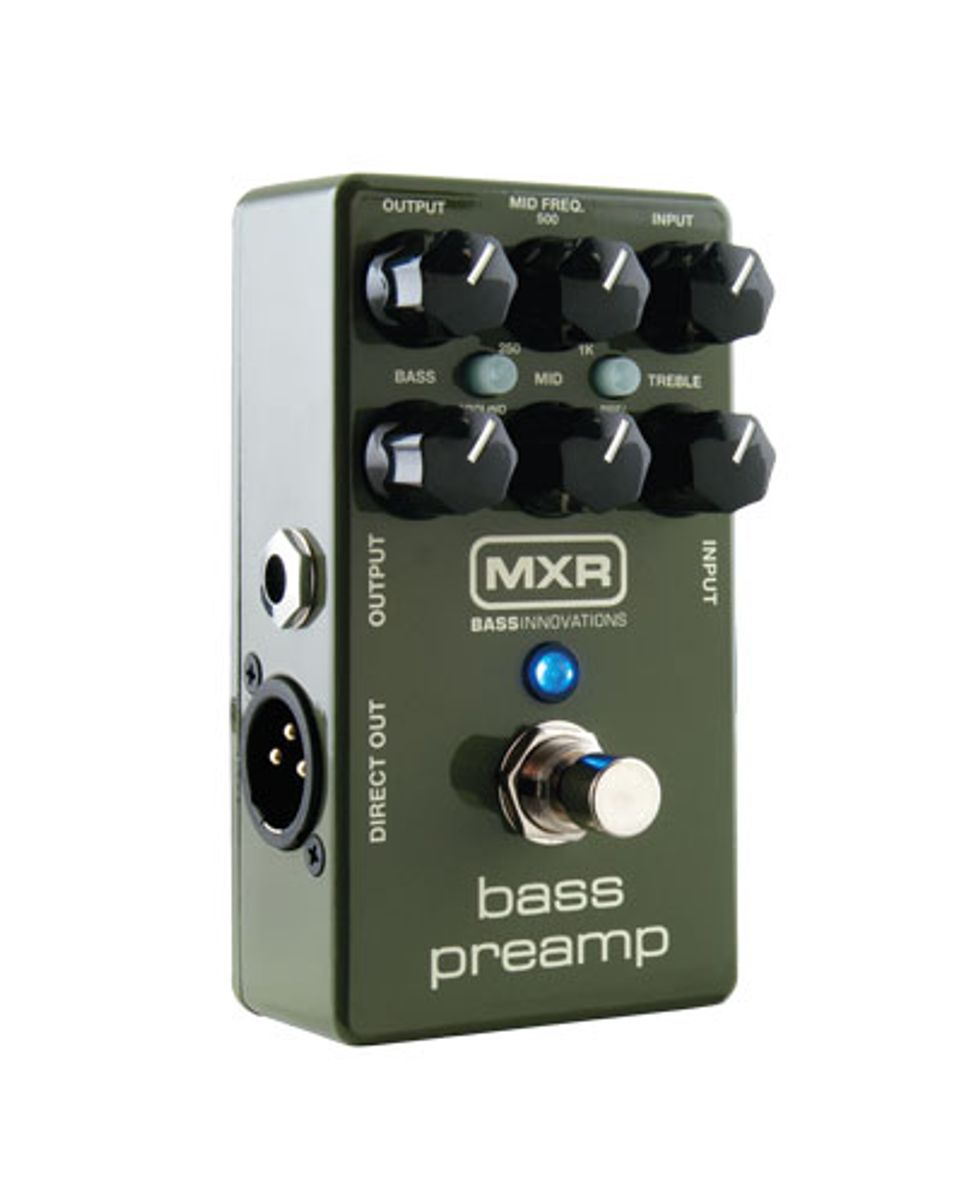
MXR Bass Preamp (October)
In his review of this little low-end powerhouse, reviewer Dave Abdo apologetically used the Swiss Army-knife metaphor to describe its tone-shaping potential. But as over-used as that comparison can be, in this case it was apt: Whether employed as a DI, a boost, or an EQ solution for odd and unexpected bass-and-backline pairings, the Bass Preamp just seemed to make everything sound sweeter. And its incredibly reasonable price made it a shoo-in for a Premier Gear award.
$169 street, jimdunlop.com
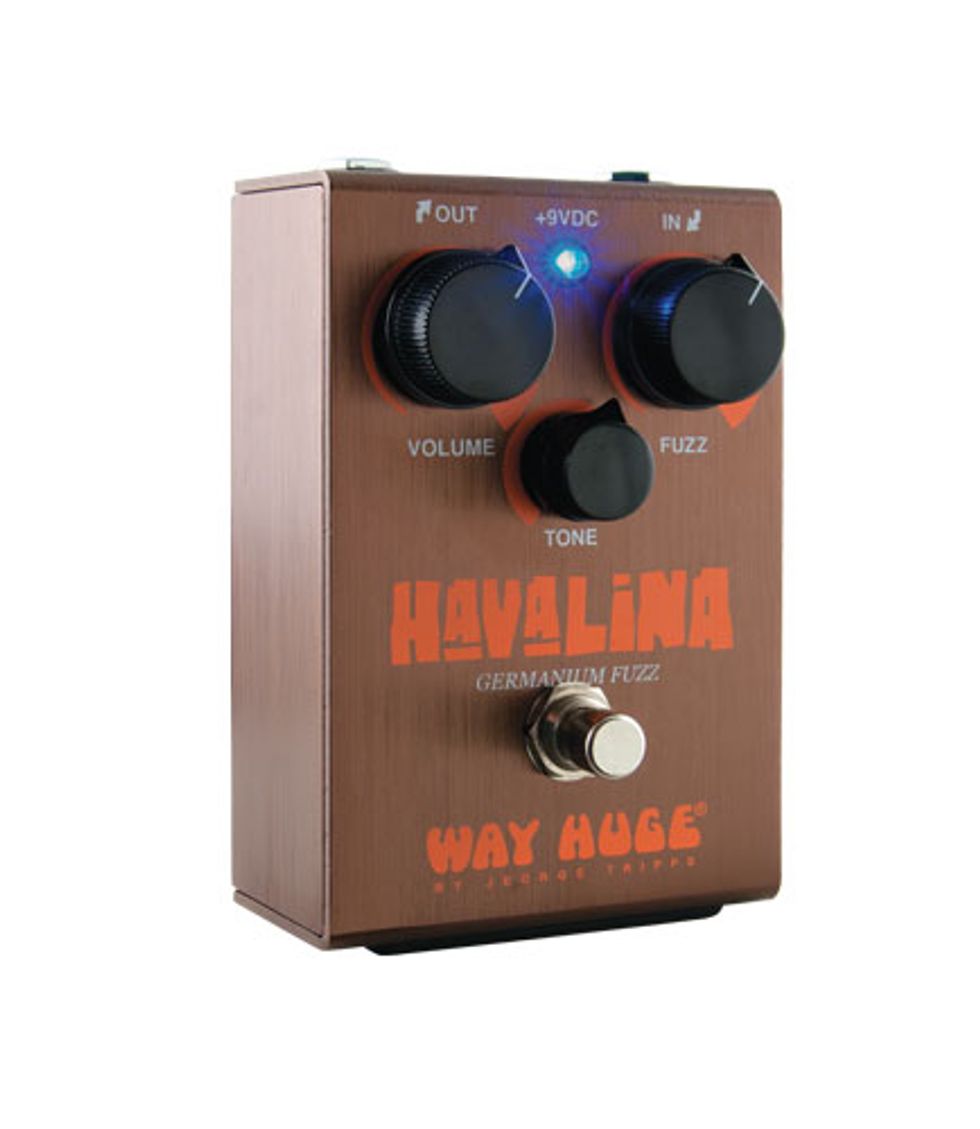
Way Huge Havalina (October)
Jeorge Tripps has always had a knack for fine-tuning and reinventing classics, but the Havalina—a germanium fuzz inspired by the Sola Sound Tonebender—is one of his all-time coolest marriages of vintage liveliness and modern quality and stability. The Havalina does everything a great Tone Bender does—snappy, snarling, wild-and-wooly fuzz, sweet-to-biting dynamics—in a sturdy, thoughtfully executed package that has more than a touch of vintage-idiosyncratic personality. With boutique-level quality, vintage vibes by the bucket load, and a price that will have cookie-cutter and boutique makers quaking in their boots, the Havalina locked up a Premier Gear award with greasy, nasty, fantastically fuzzy ease.
$119 street, wayhuge.com
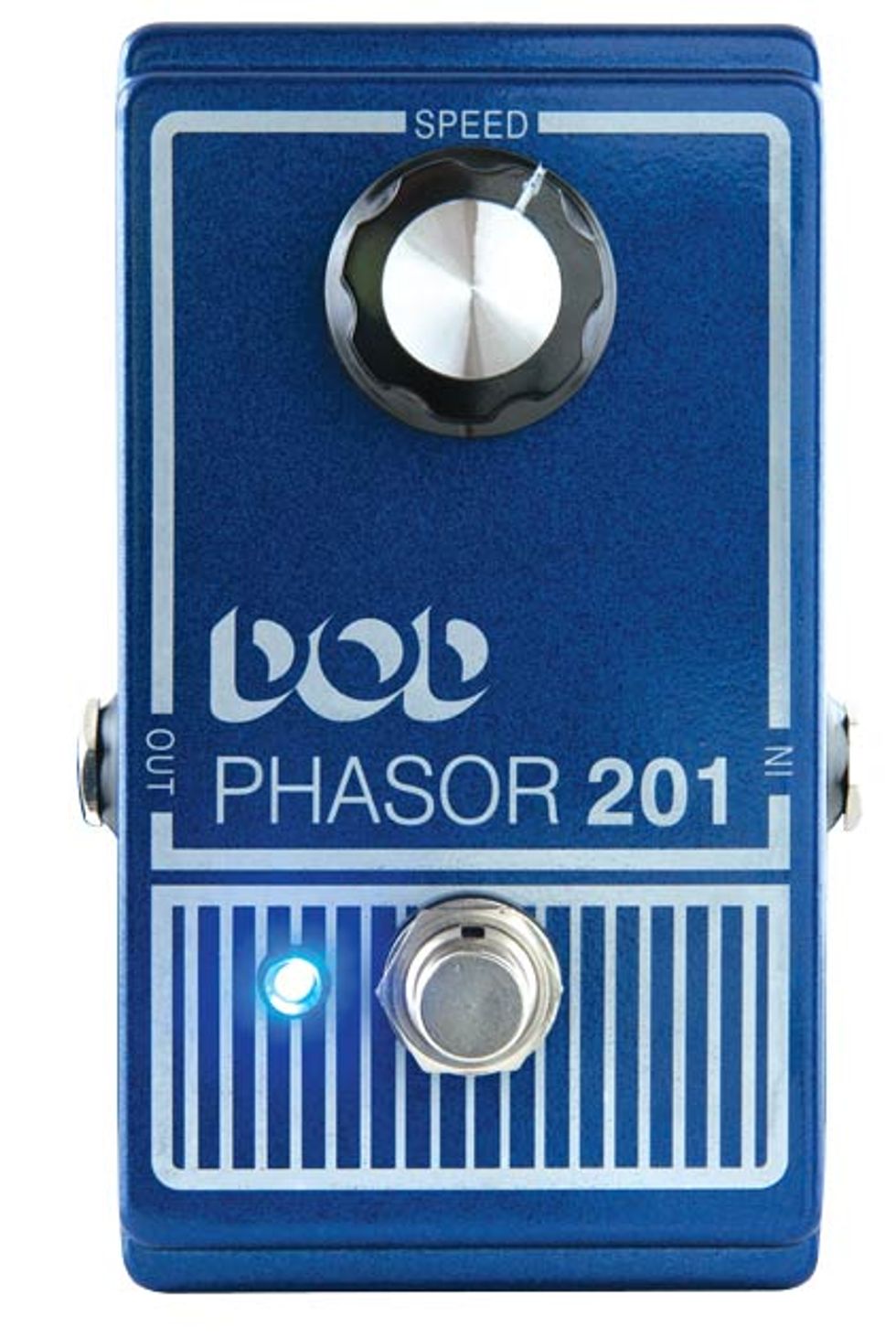
DOD Phasor 201 (October)
The original DOD Phasor 201 may not have stirred up legions of acolytes like its ’70s contemporaries, the Small Stone and Phase 90, but its resurrection might at last elevate this little blue swirl machine out of the fog of cult obscurity. Reviewer Jordan Wagner praised the 201’s knack for sounding like an organic part of a signal chain—especially when overdrive is in the mix—and was impressed with the pedal’s honey-smooth voice in both slow, psychedelic tape-phase applications and fast rotary-speaker-type settings. Simple, swirlingly rich, and a relative steal, the Phasor 201 seems primed for a longer stay this time around.
$99 street, dod.com

Taylor T5z
The cult of the T5 may not be growing quite as fast as Bob Taylor hoped, but the model’s ranks of loyalists are bound to feel vindicated by the new T5z, which refines the instrument as an electric guitar without sacrificing an ounce of its switch-hitting, amplified-acoustic potential. Reviewer Adam Perlmutter loved its ability to deliver Telecaster- and Stratocaster-like tones colored with a unique, woody air. He also dug its versatile, feedback-resistant acoustic tones. But it was the flawless build and silky playability that put the T5z over the top.
$2,999 street, taylorguitars.com

EarthQuaker Devices Arrows (November)
Considering all the tone-mangling tools that emerge from EarthQuaker’s lab, it was almost shocking to see them debut a box of such flawlessly simple functionality and utility. But the Arrows booster takes a Premier Gear award in no small part because of an elegant usability that translates effortlessly into livelier tones. Given EQD’s knack for fantastic fuzz, it was no surprise how beautifully the Arrows enhanced fuzz tones, but what really struck us was how it made almost every amp, guitar, bass, and keyboard we tried it with jump with a little something extra. Whether it’s a touch of clean boost, or a little extra presence you need, Arrows hits the mark.
$95 street, earthquakerdevices.com
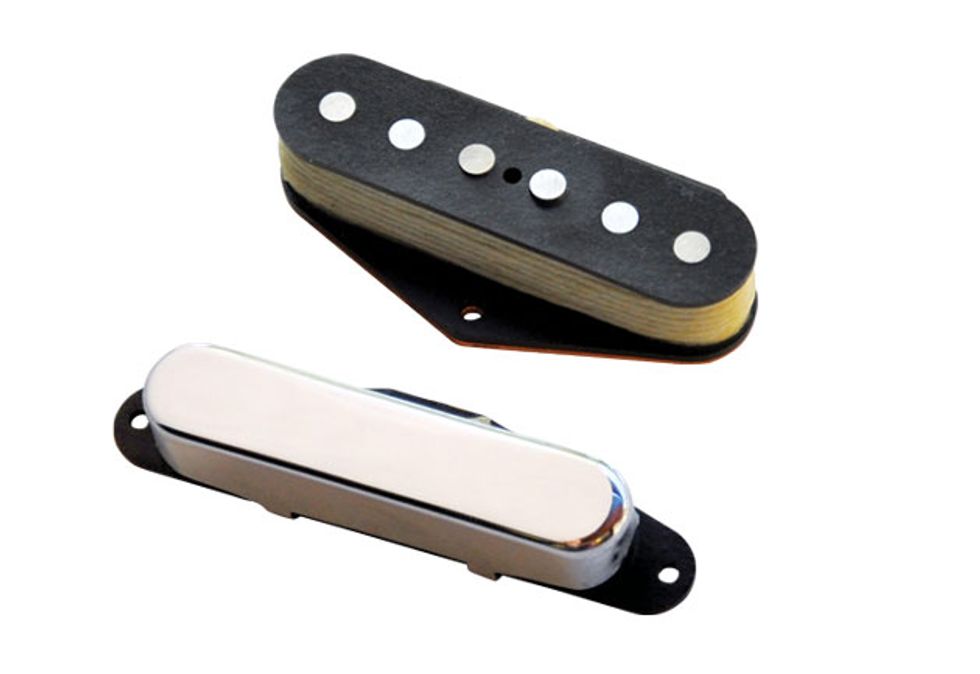
Nordstrand NVT A3 Set (November)
As Shawn Hammond remarked in his review, “Correct vintage tone can be debated endlessly,” but even though the NVT A3s barked like a good set of vintage Tele pickups, Hammond was as astounded by the pickups’ lovely, almost lipstick-tube-like textures as he was by how they excelled in both ultra-clean and rowdy settings.
$97 street (each), nordstrandpickups.com
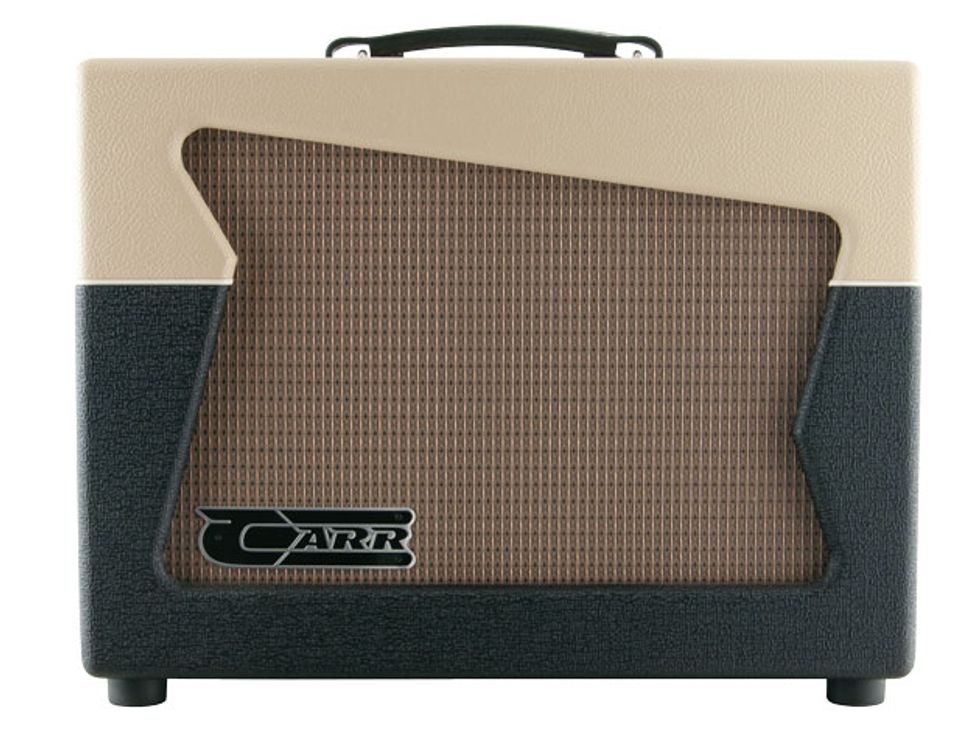
The Skylark, from North Carolina Builder Steve Carr, is a descendant of Fender's Harvard, an amp that gained fame from Steve Cropper's classic Stax recordings. Senior Editor Joe Gore found the Skylark an admirable extension of the Harvard's best qualities—richly chiming tones, superb dynamic response, and gratifying overdrive at modest volume. The dual-6V6 circuit transitions smoothly from clean to crunch and the tone controls are more flexible than its vintage Fender counterparts. Gore put it simply, “The Skylark sings no matter how you set the knobs.”
$2,390 street, carramps.com

Pettyjohn Electronics PreDrive (October)
Reviewer Joe Charupakorn called the Pettyjohn PreDrive “an adult effect” not because it’s graphically lurid or obscene, but because it takes fine-tuning to a level typically reserved for post production at a mixing desk. But that sophistication and precision makes the PreDrive a potentially invaluable mate in studio as well as for unpredictable live backline situations.
$599 street (handwired version), $399 street (PCB version), pettyjohnelectronics.com
A year’s worth of gear at Premier Guitar adds up to a whole lot of wood, wire, silicon, germanium, aluminum, and steel. It also makes up a whole universe of musical possibilities, which is what strikes us as we look back on the Premier Gear Award winners for 2014. From luxurious acoustics to ridiculously buttery-sounding amps and furiously frantic vintage-style fuzzes, there are almost infinite sounds to be extracted from this roster of favorites.
As always, you’ll see the full spectrum of manufacturers represented, too—from garage circuit tweakers to industry giants. And apart from the beautiful sounds that you’re likely to extract from these instruments of expression, that diversity among builders might be the thing that makes this industry so fun and special. We all share the joy, ecstasy, emotion, and rush of creation that music brings. And from these 43 award-winning guitars, pedals, amps, audio interfaces, and accessories, we expect y’all will brew up more than a little magic in the years to come. Happy music making, and enjoy the ride.




![Rig Rundown: AFI [2025]](https://www.premierguitar.com/media-library/youtube.jpg?id=62064741&width=1245&height=700&quality=70&coordinates=0%2C0%2C0%2C0)












 Shop Scott's Rig
Shop Scott's Rig





